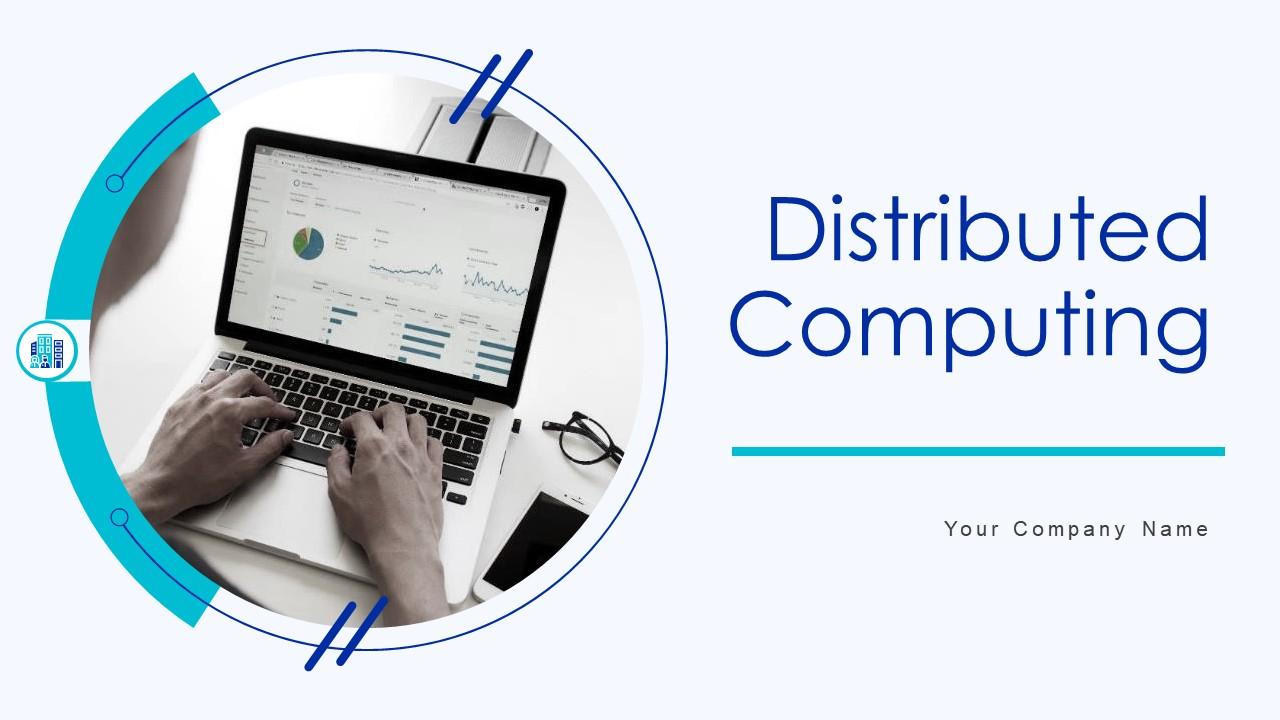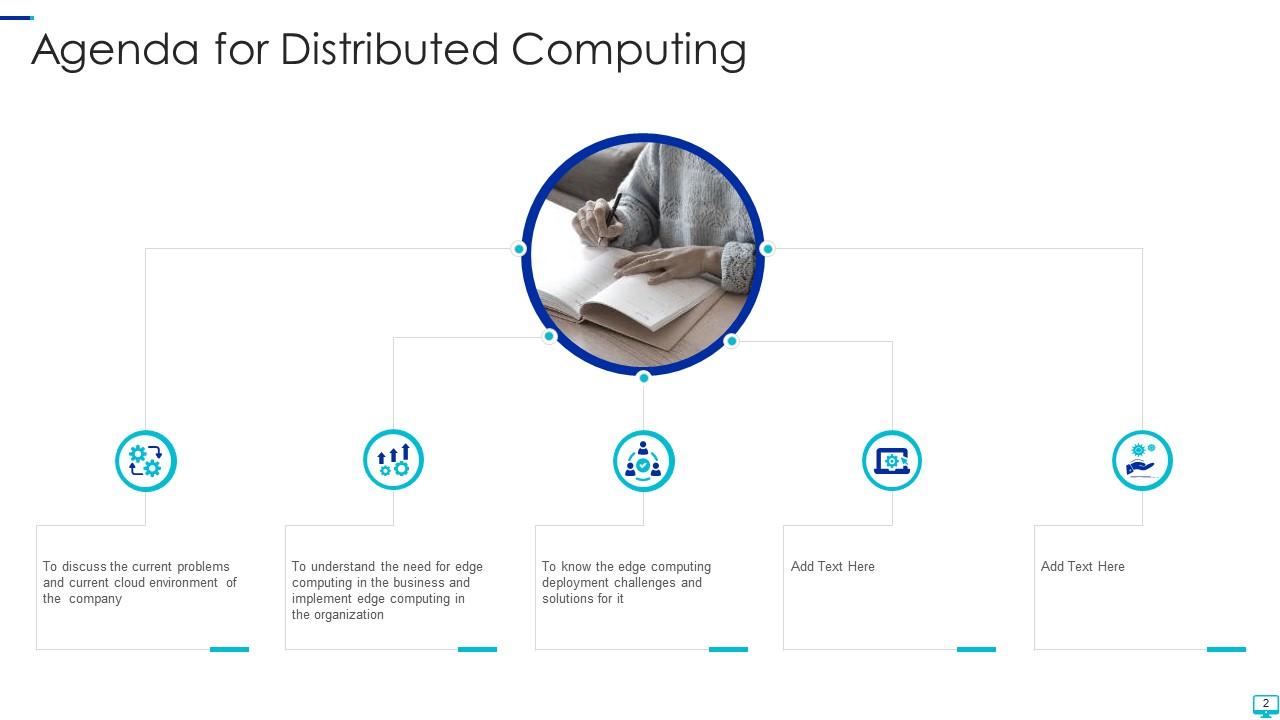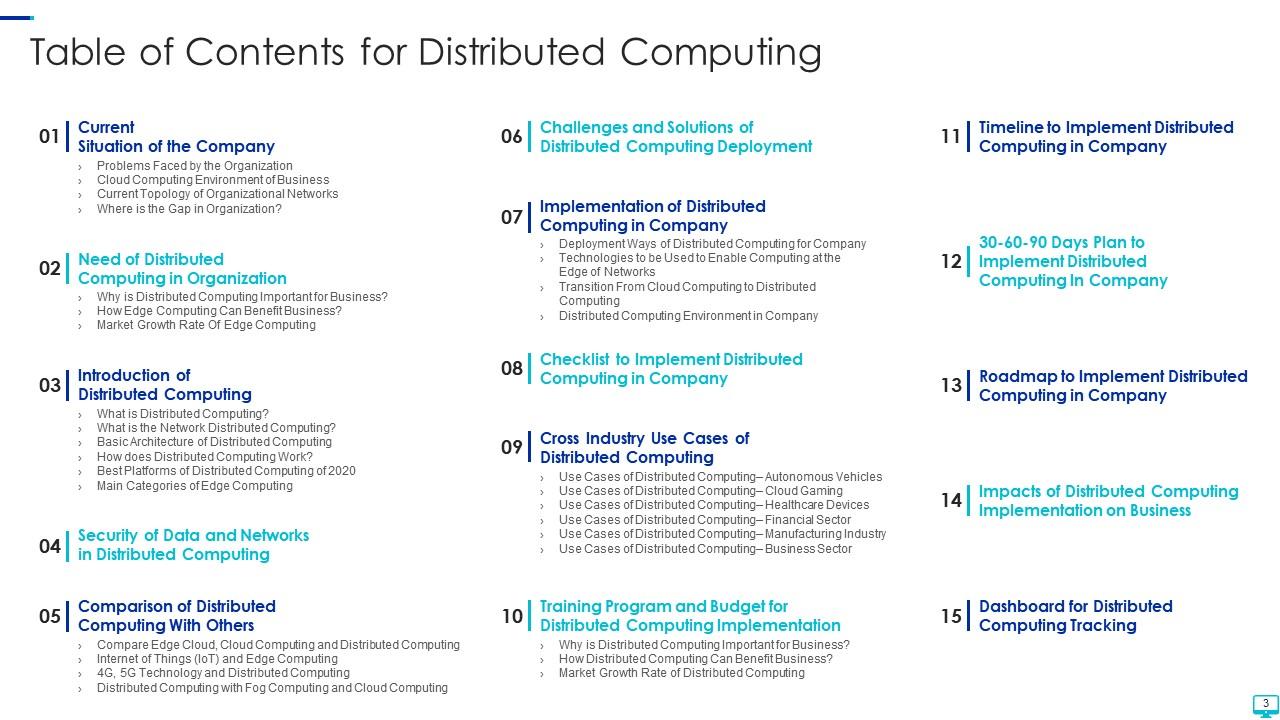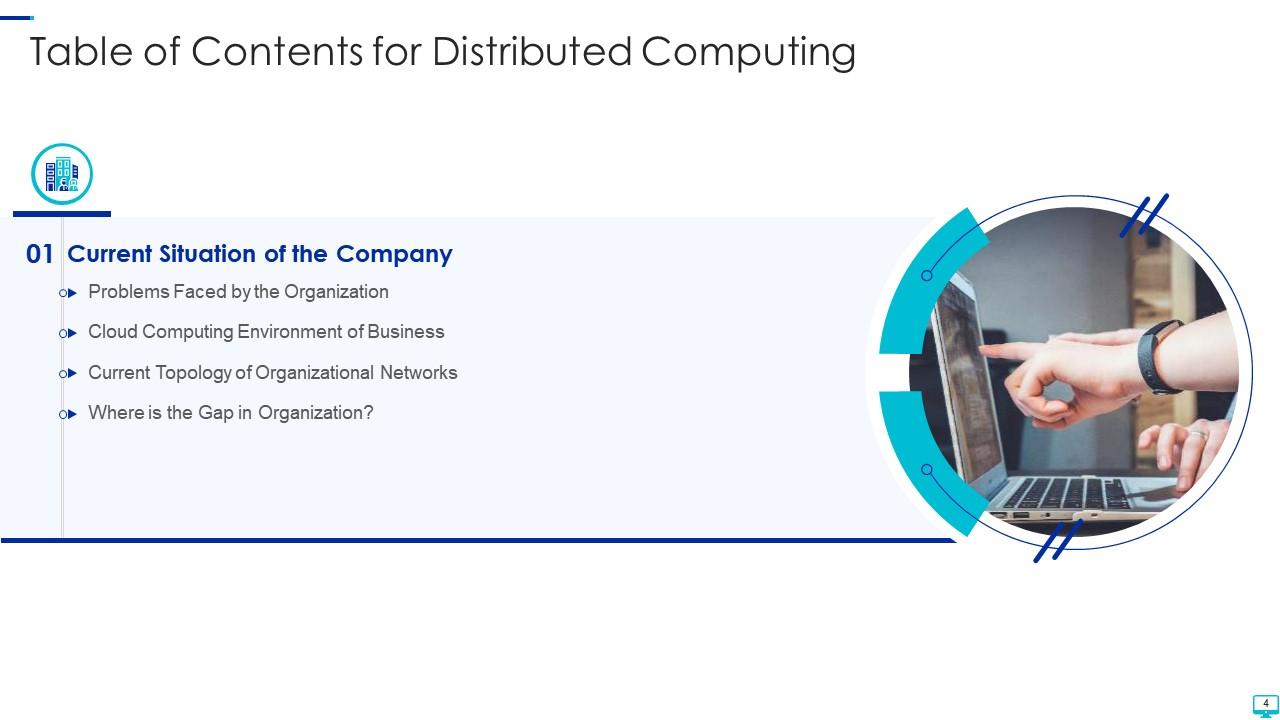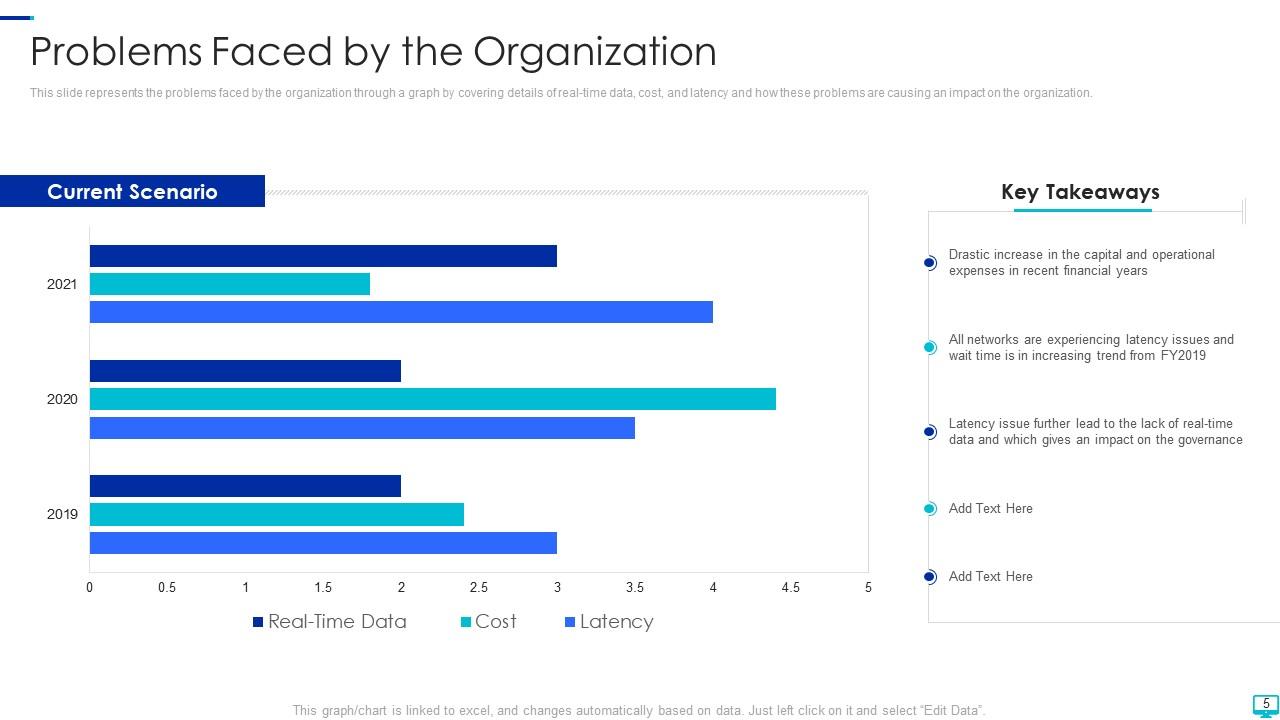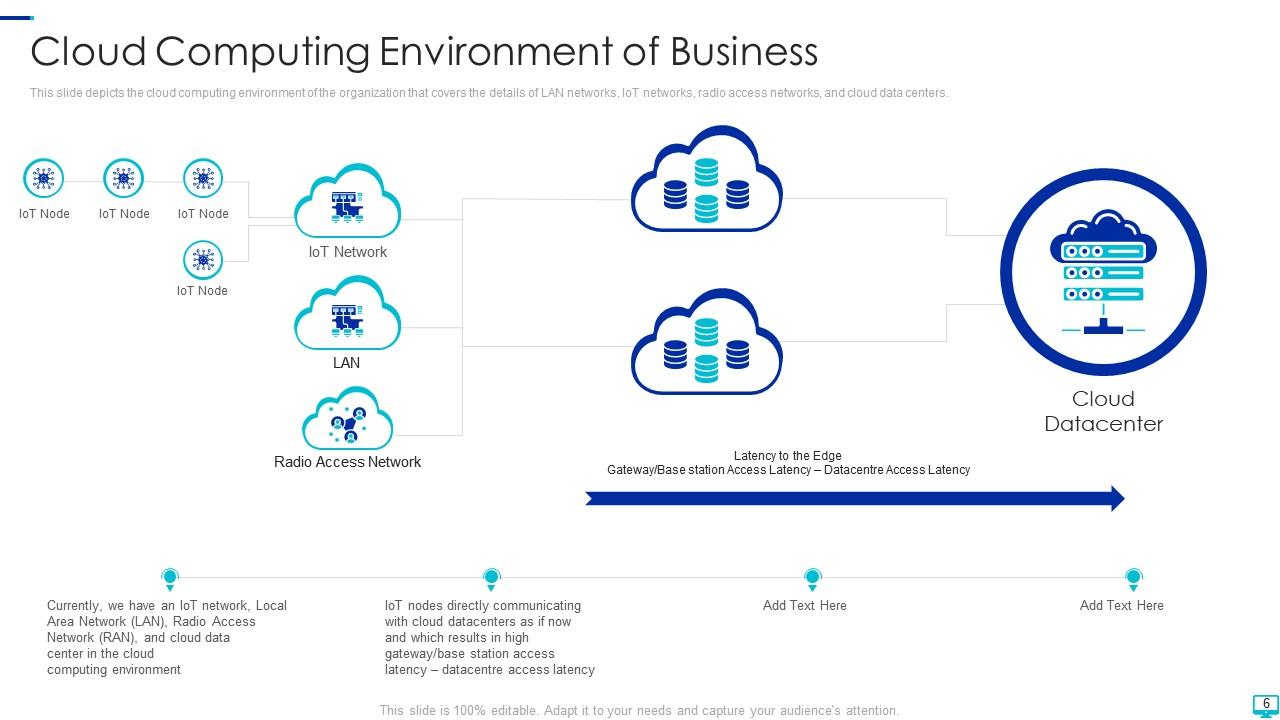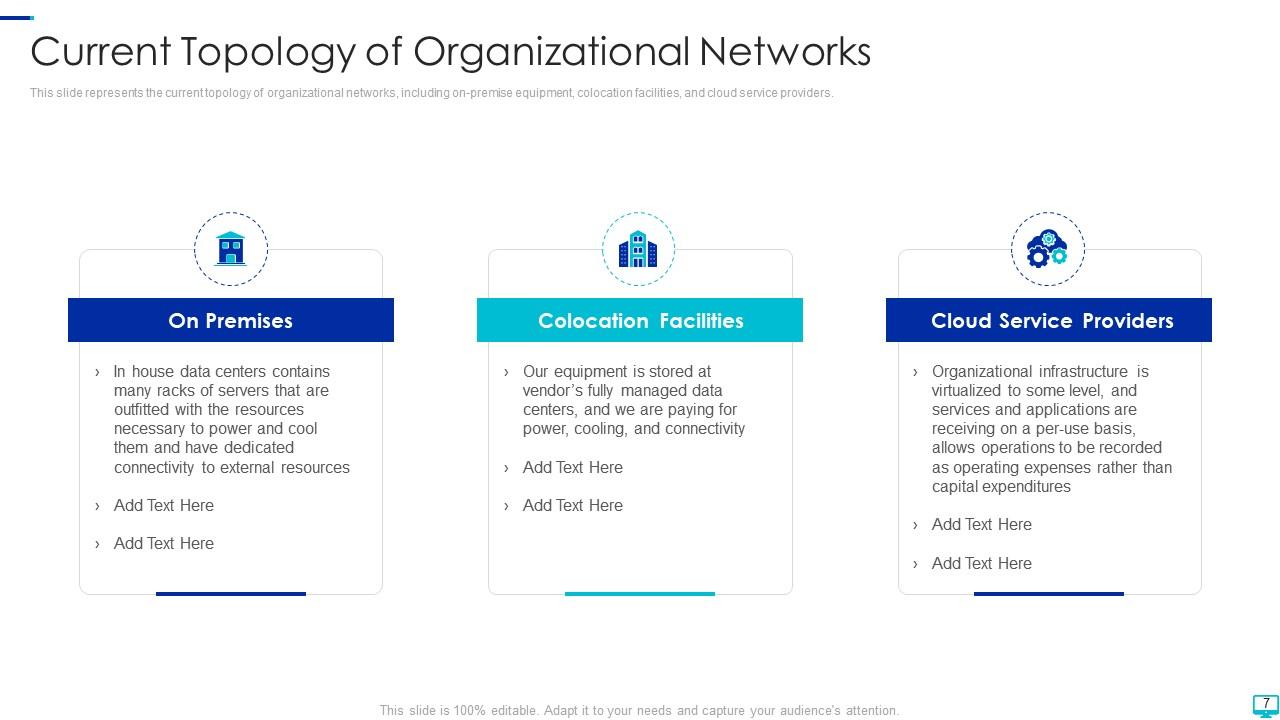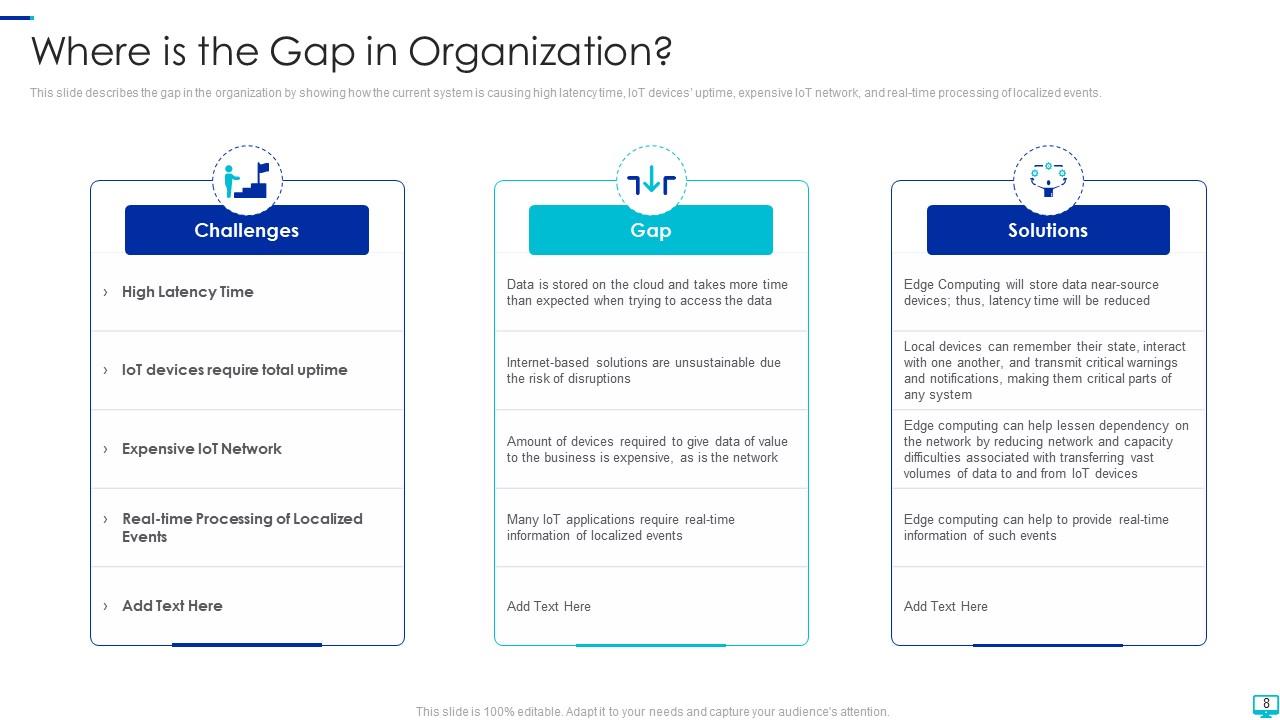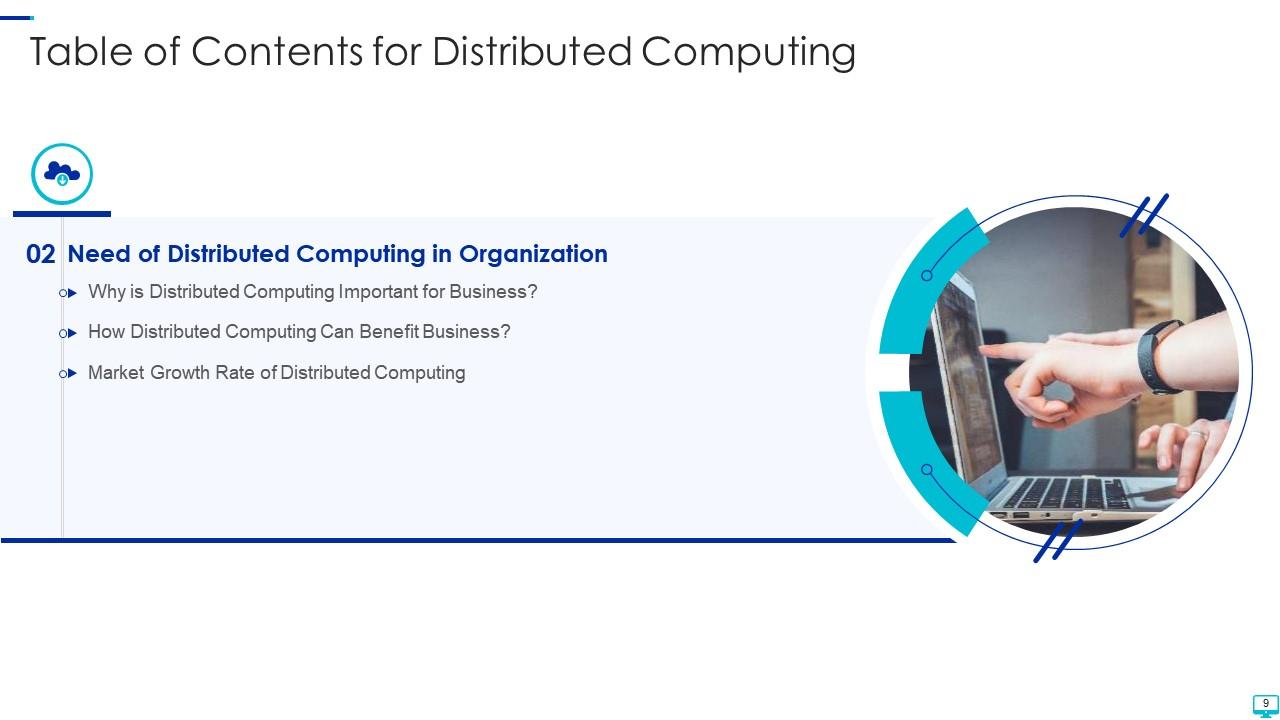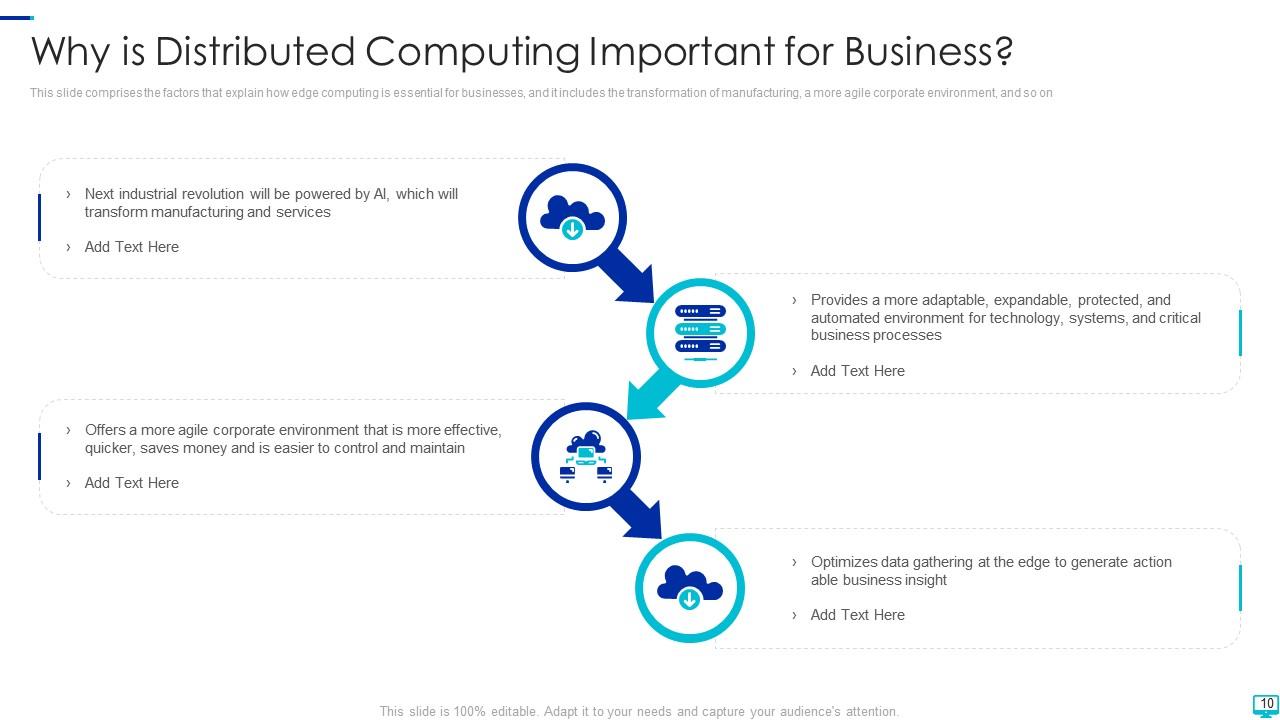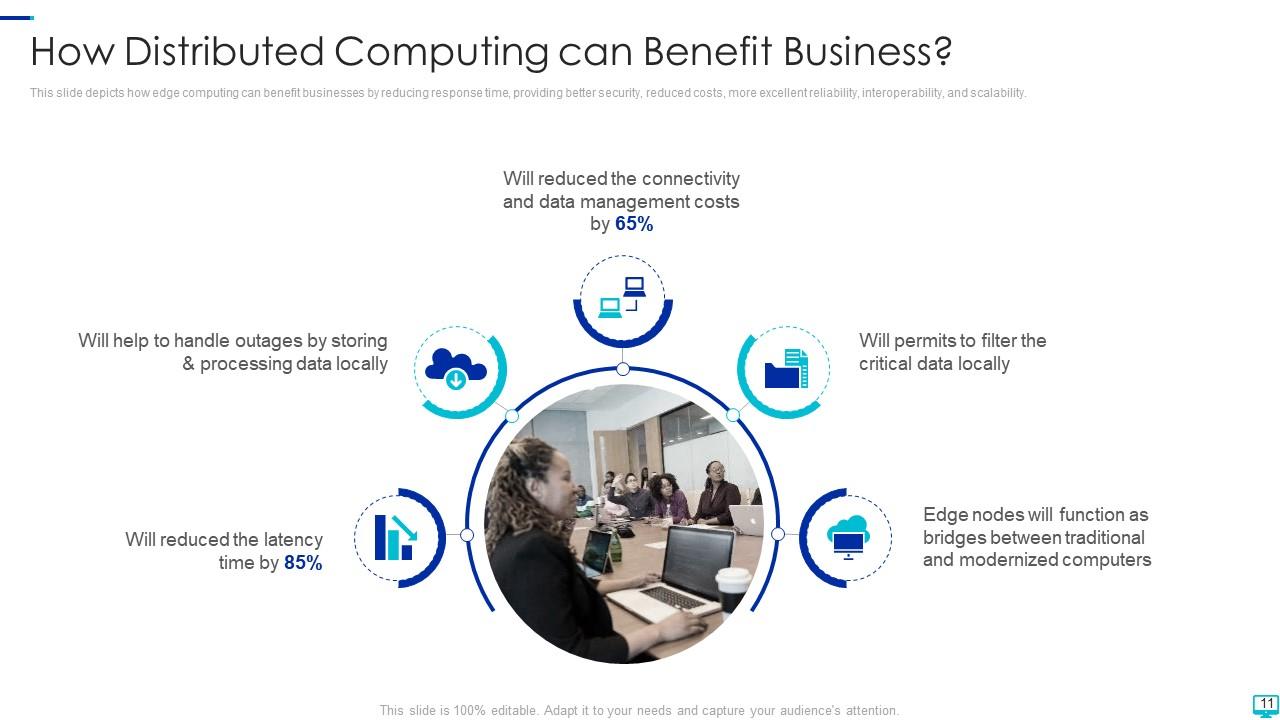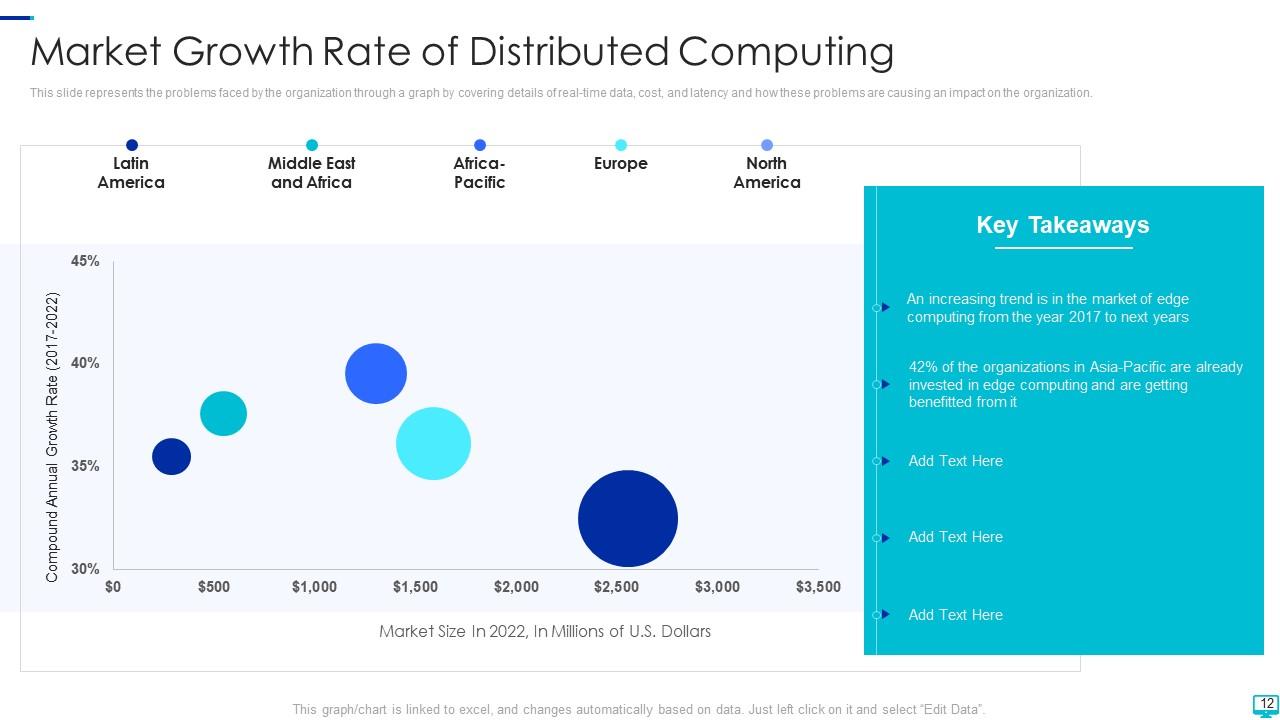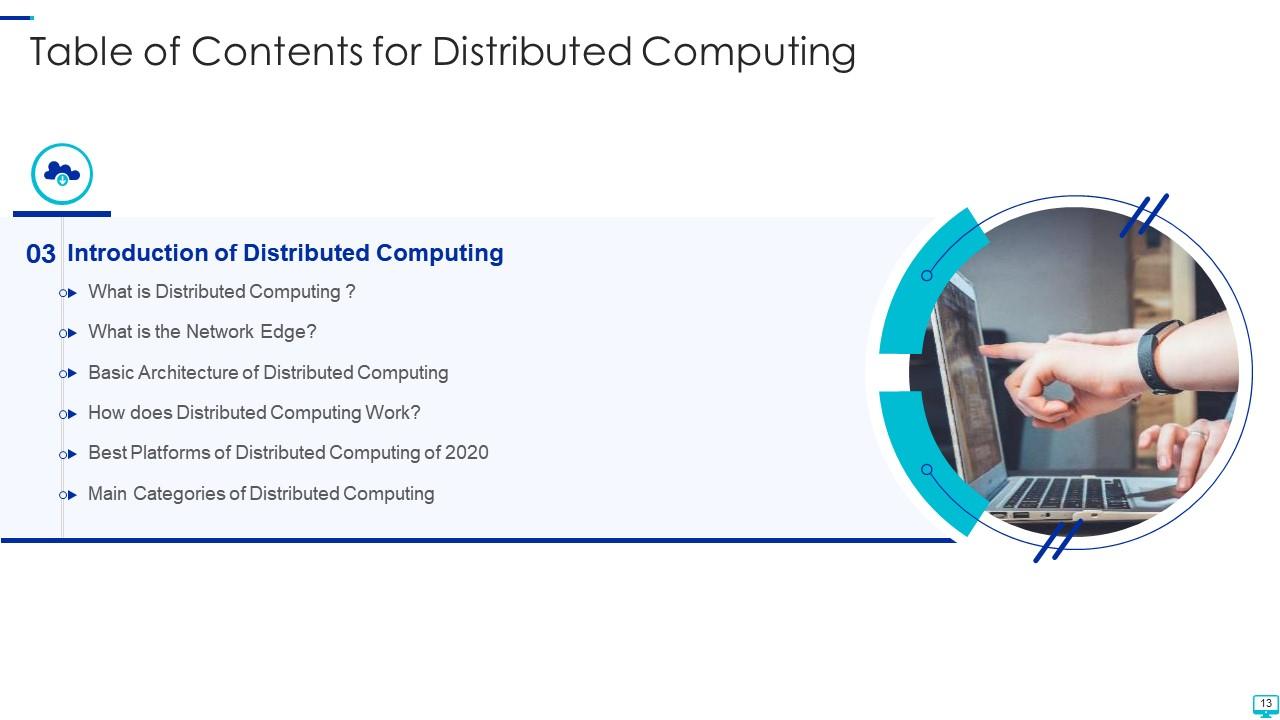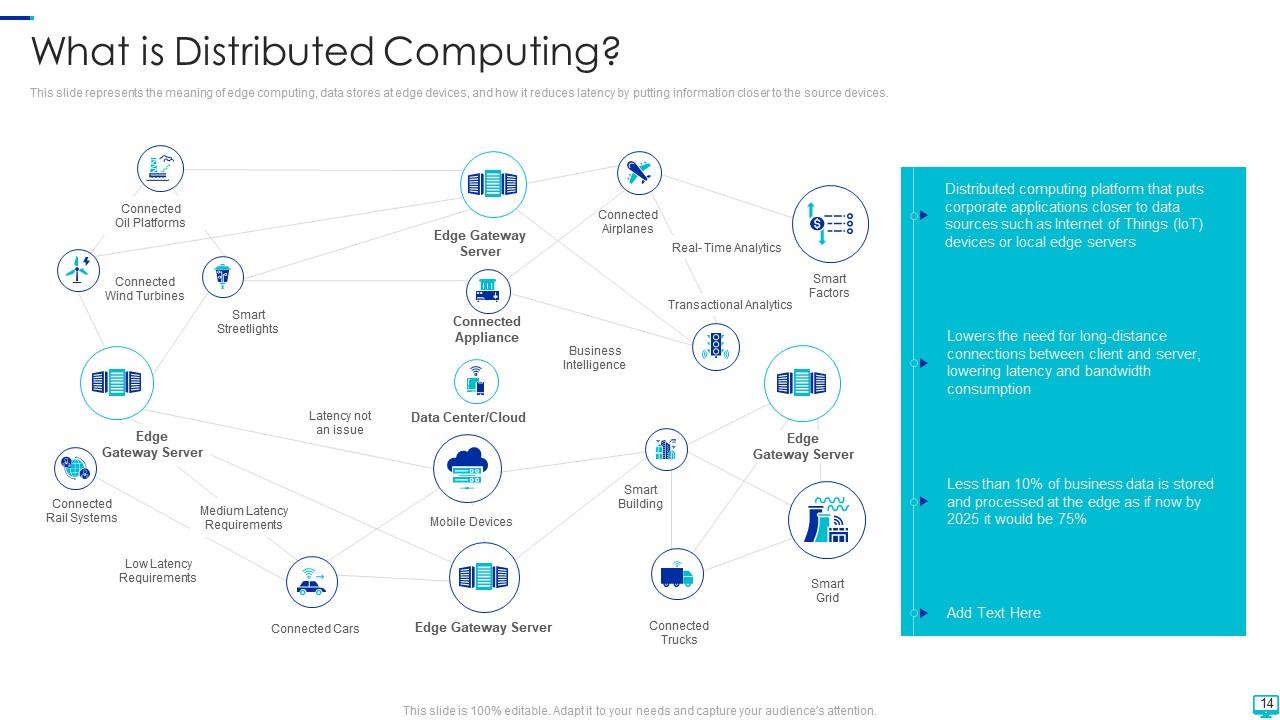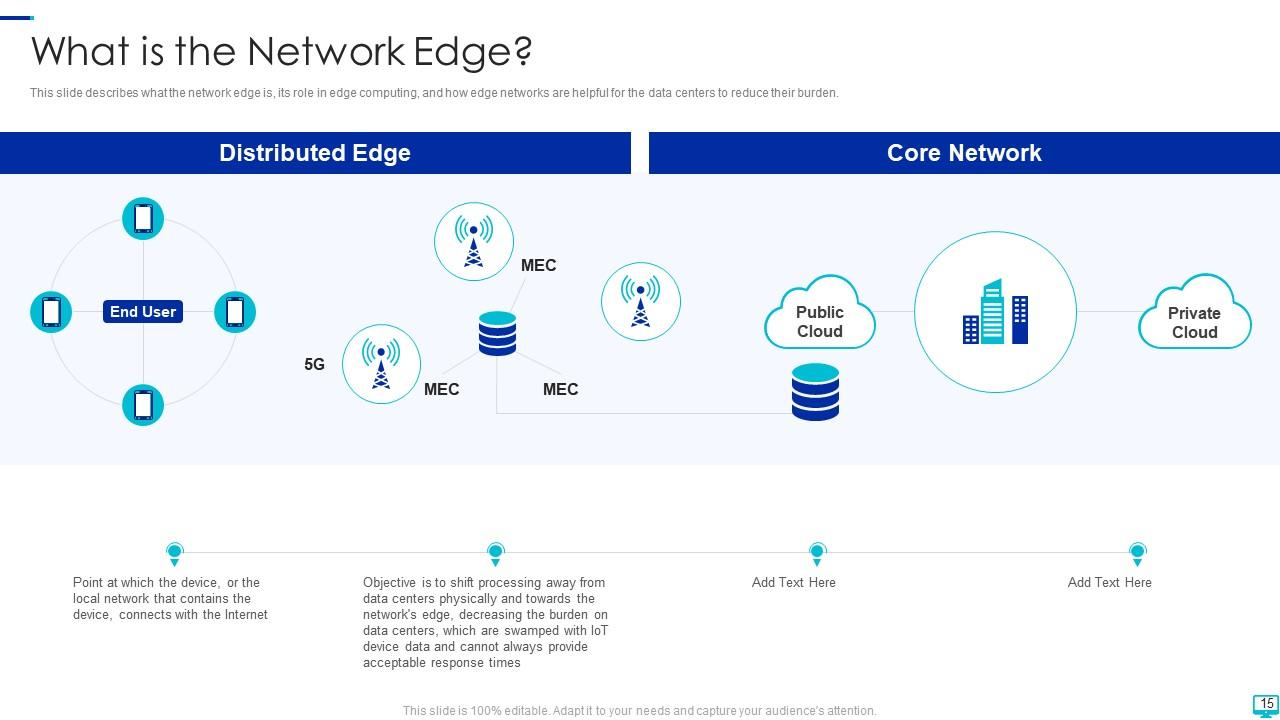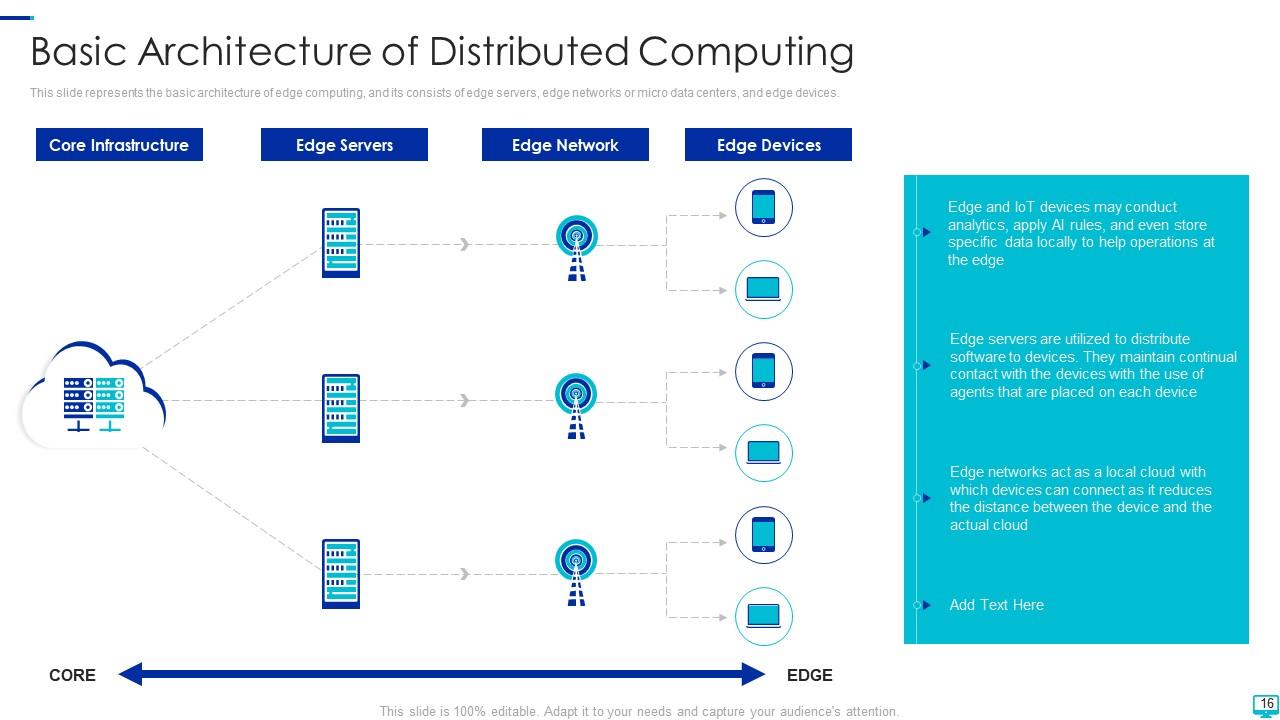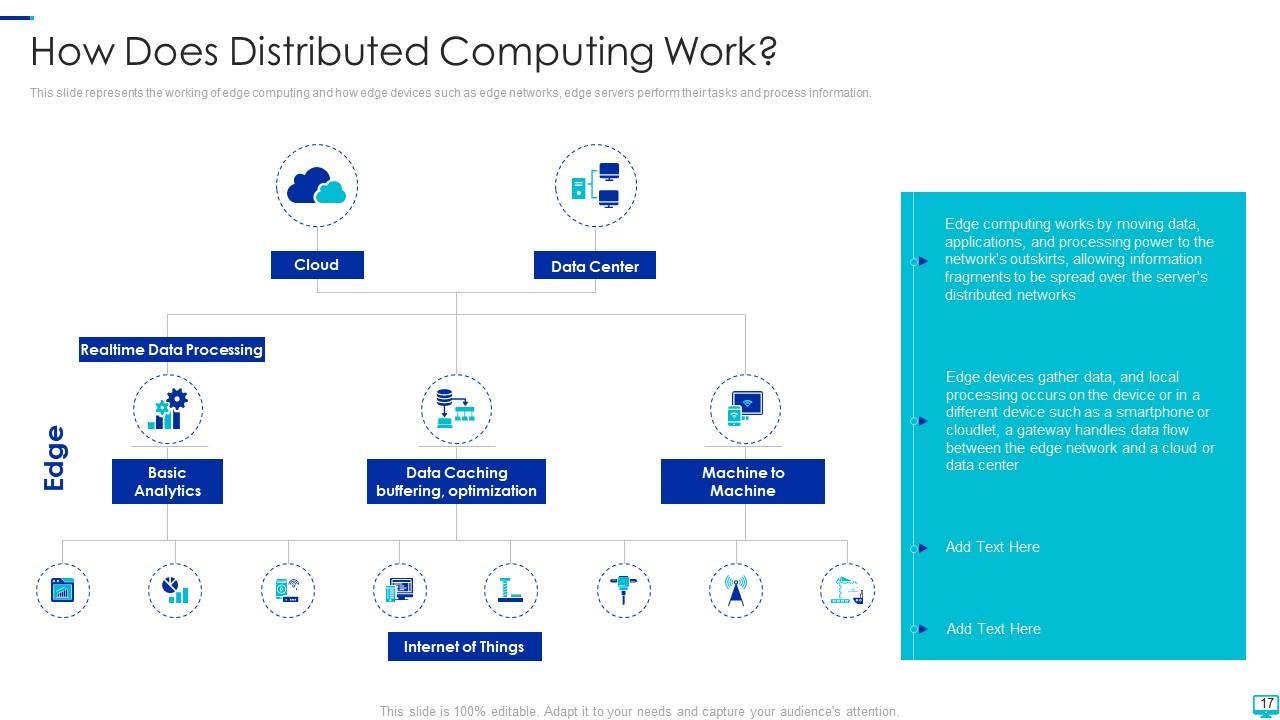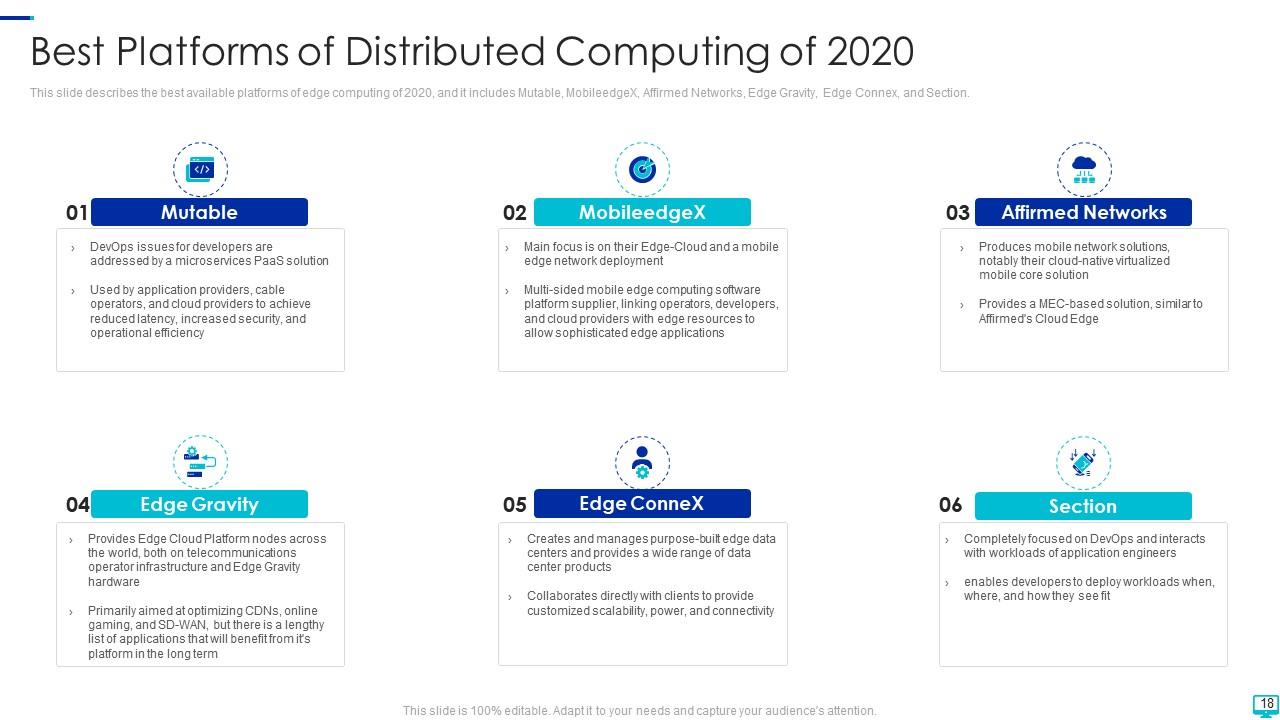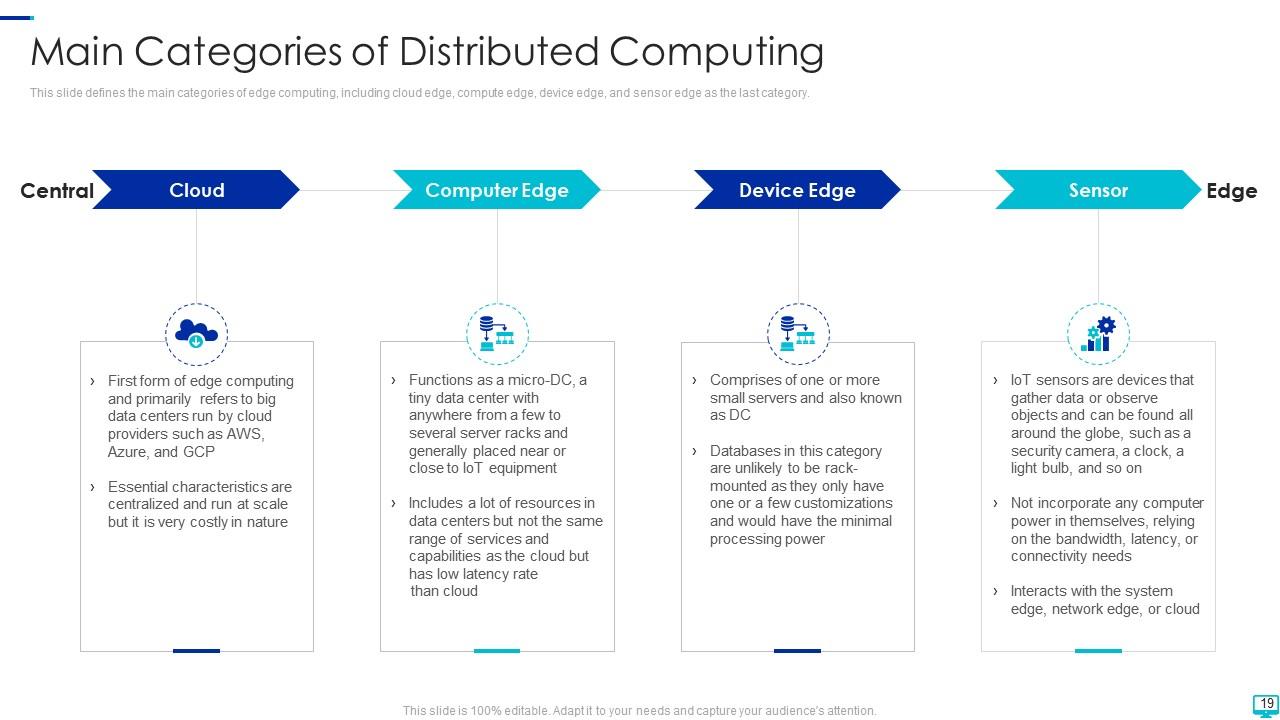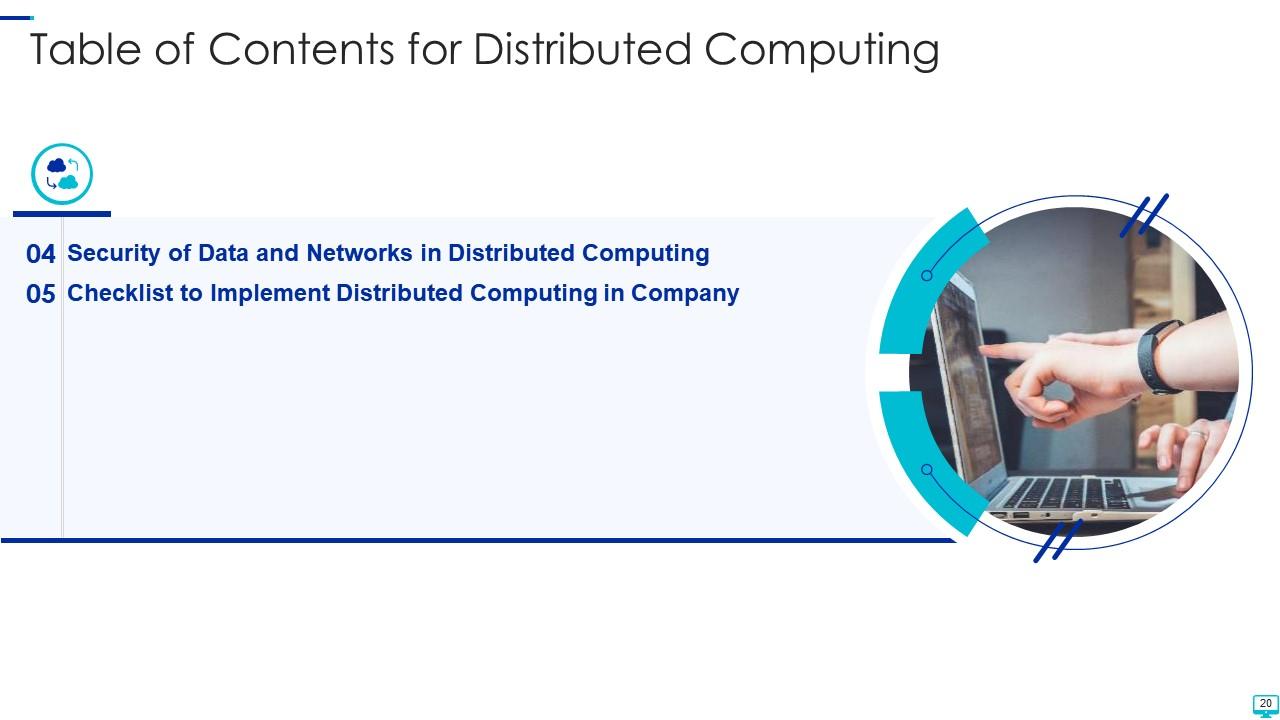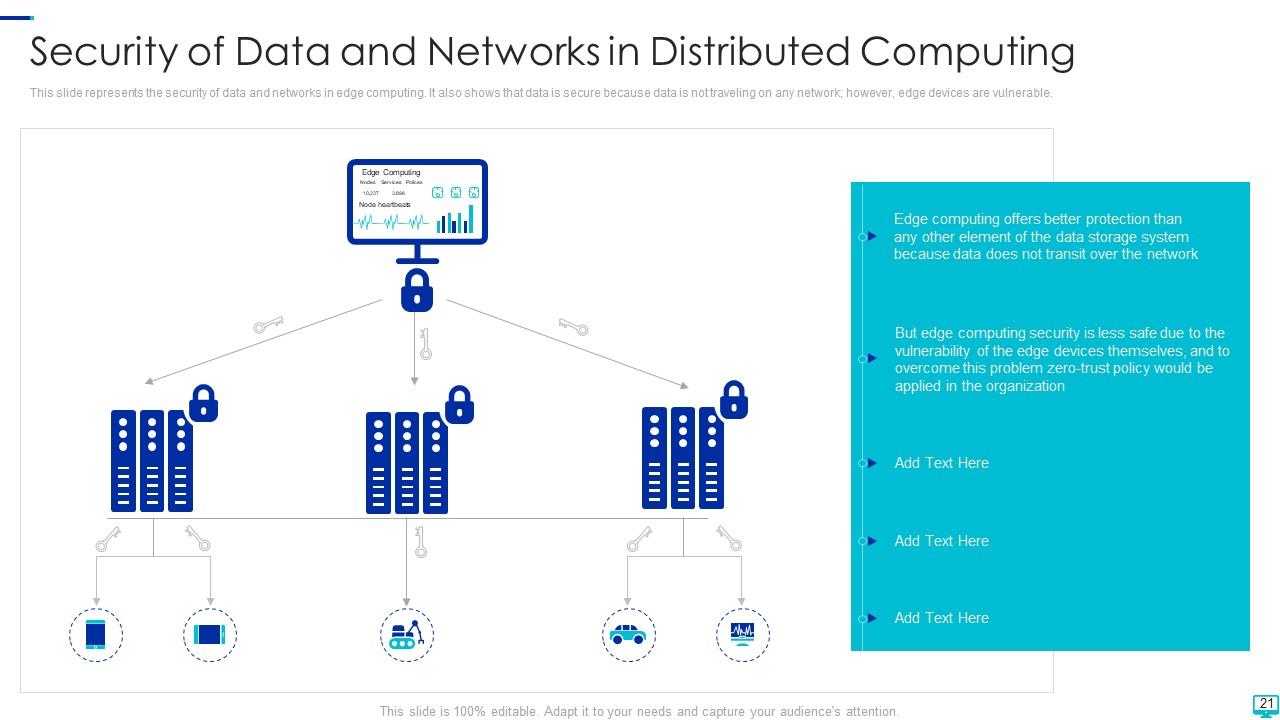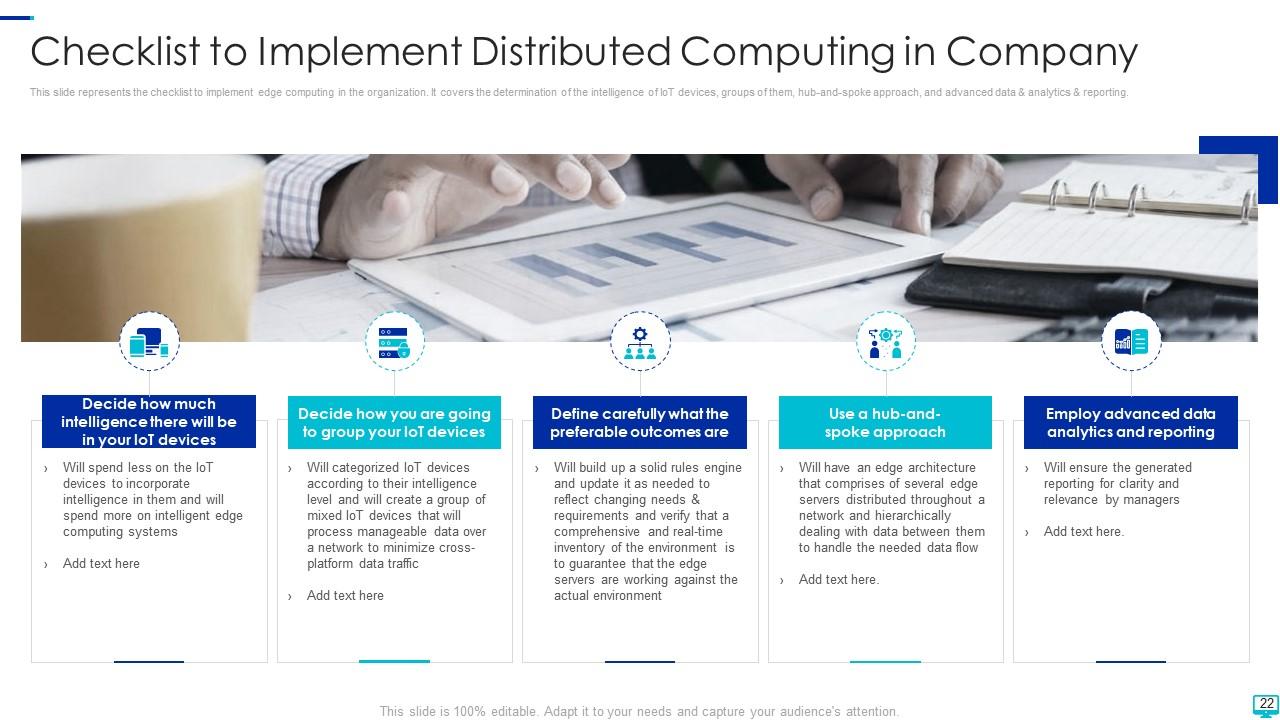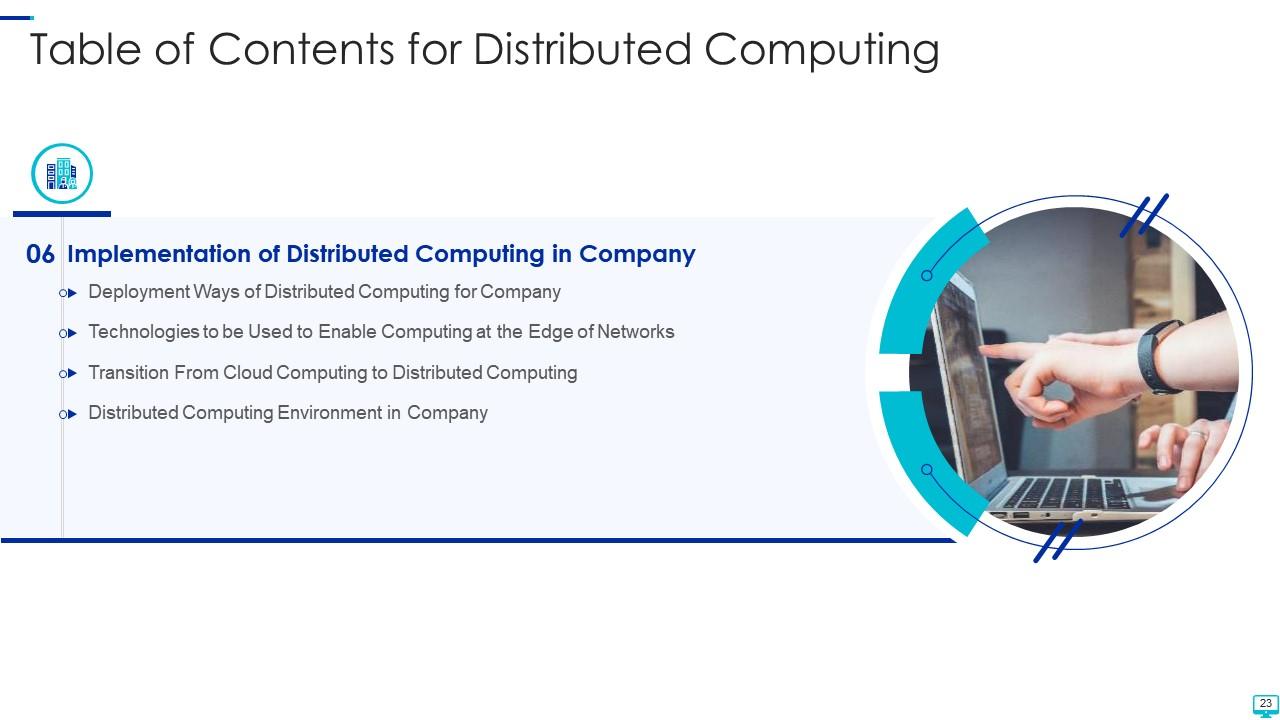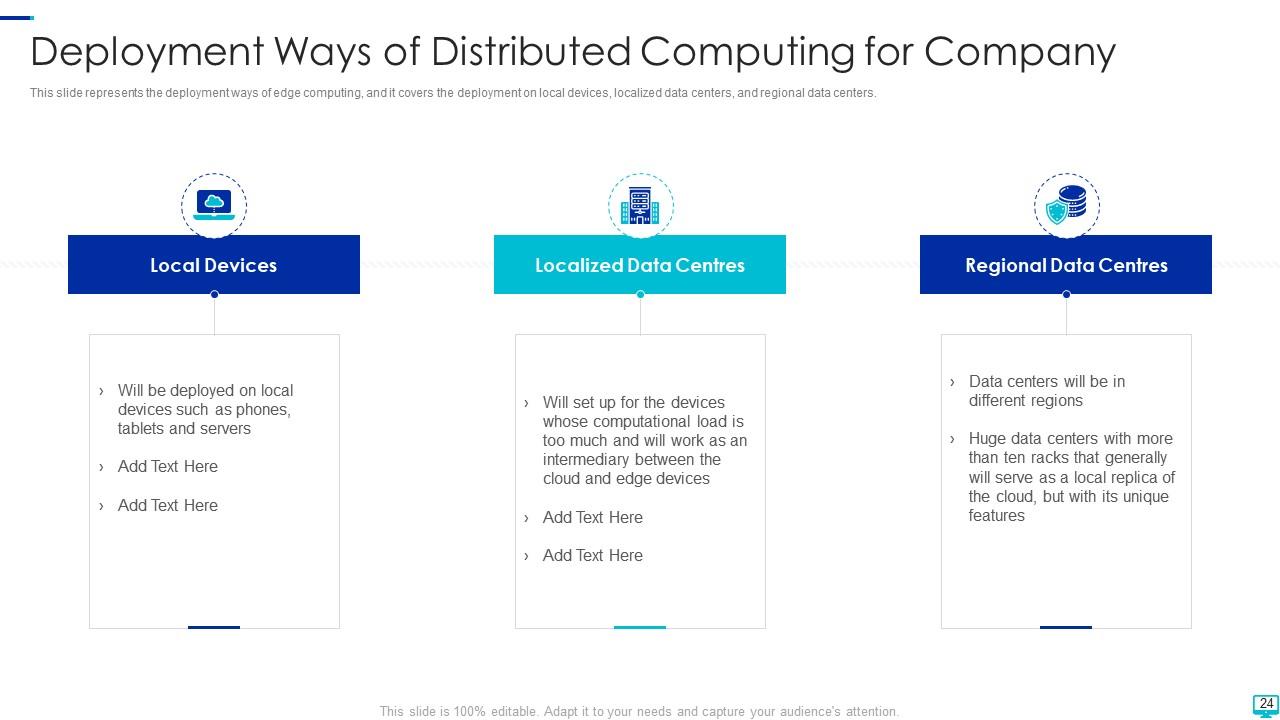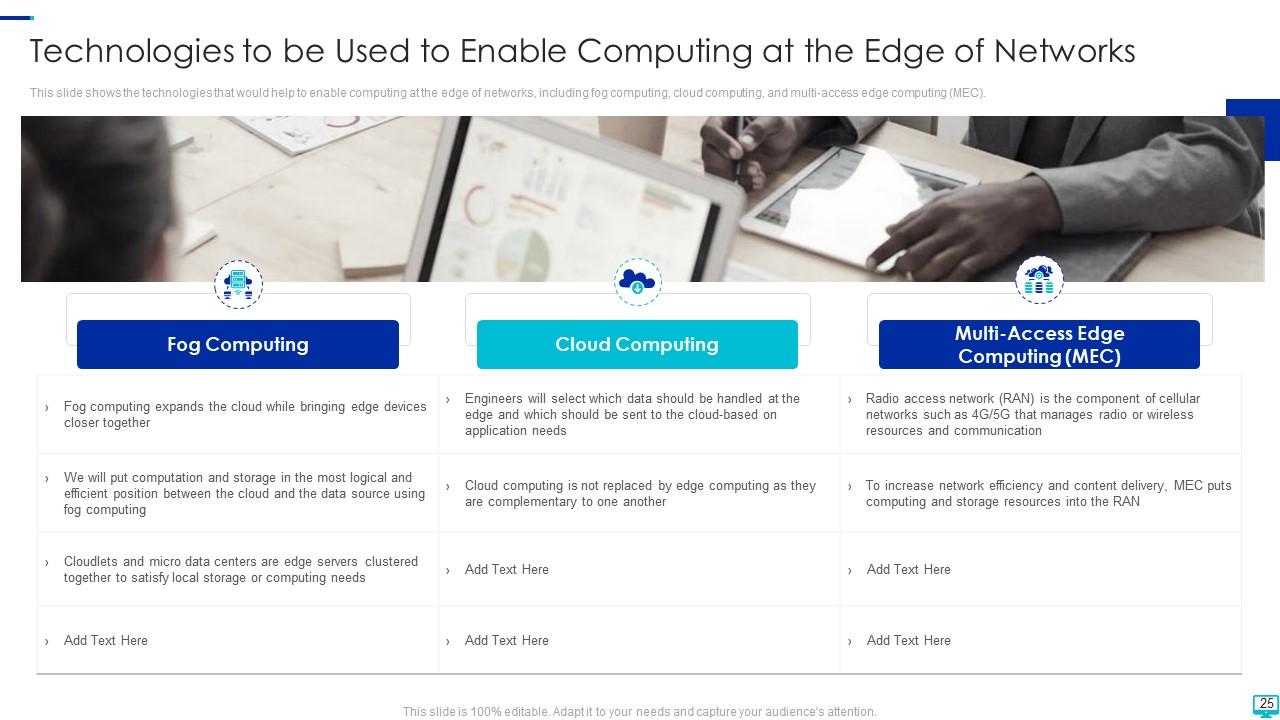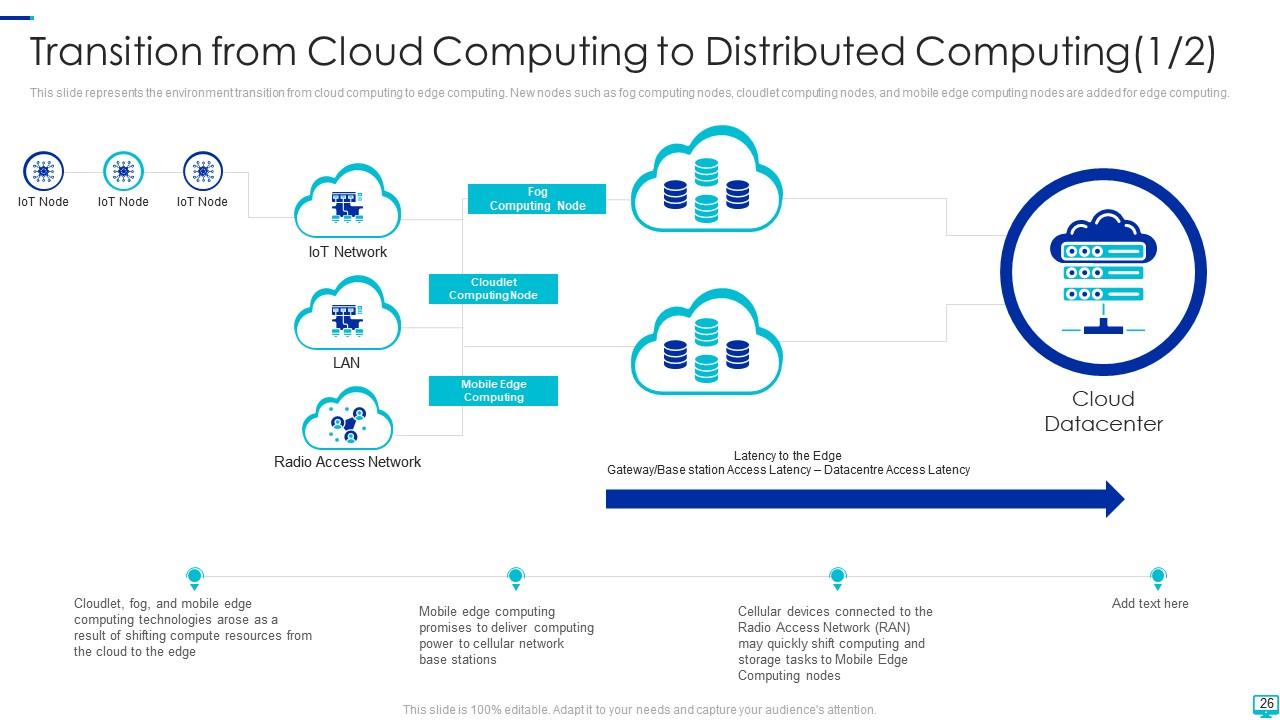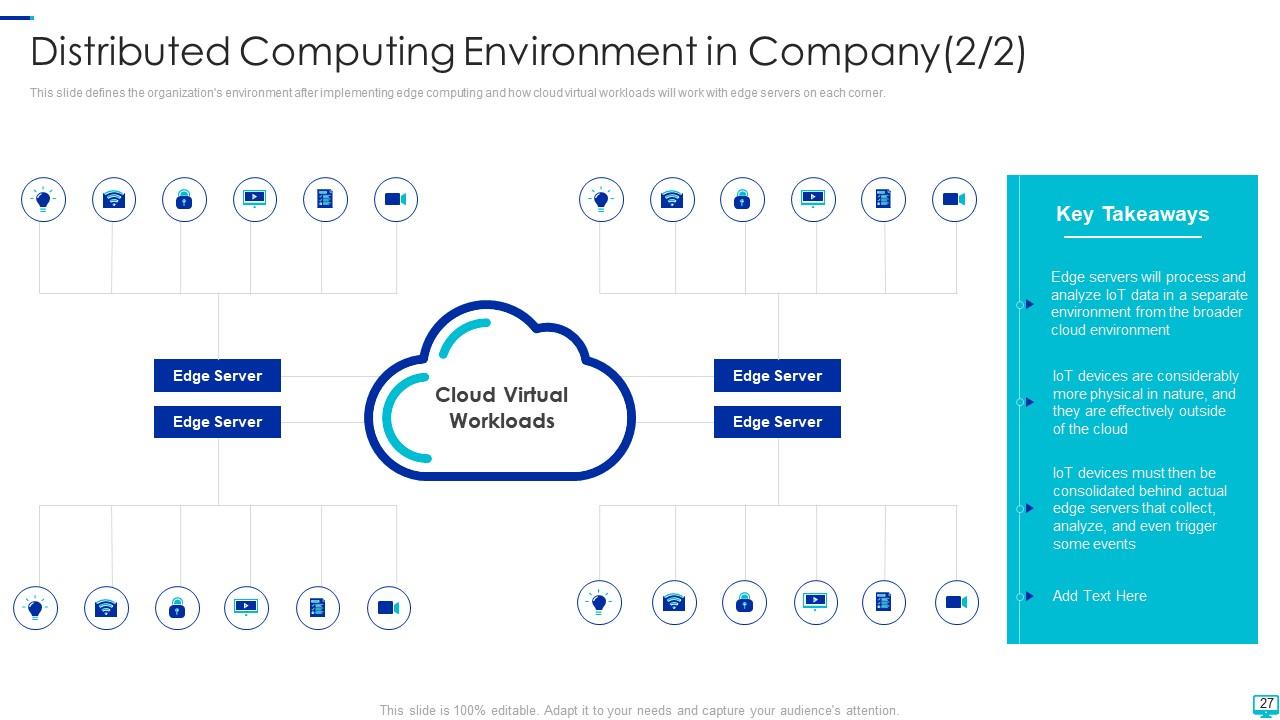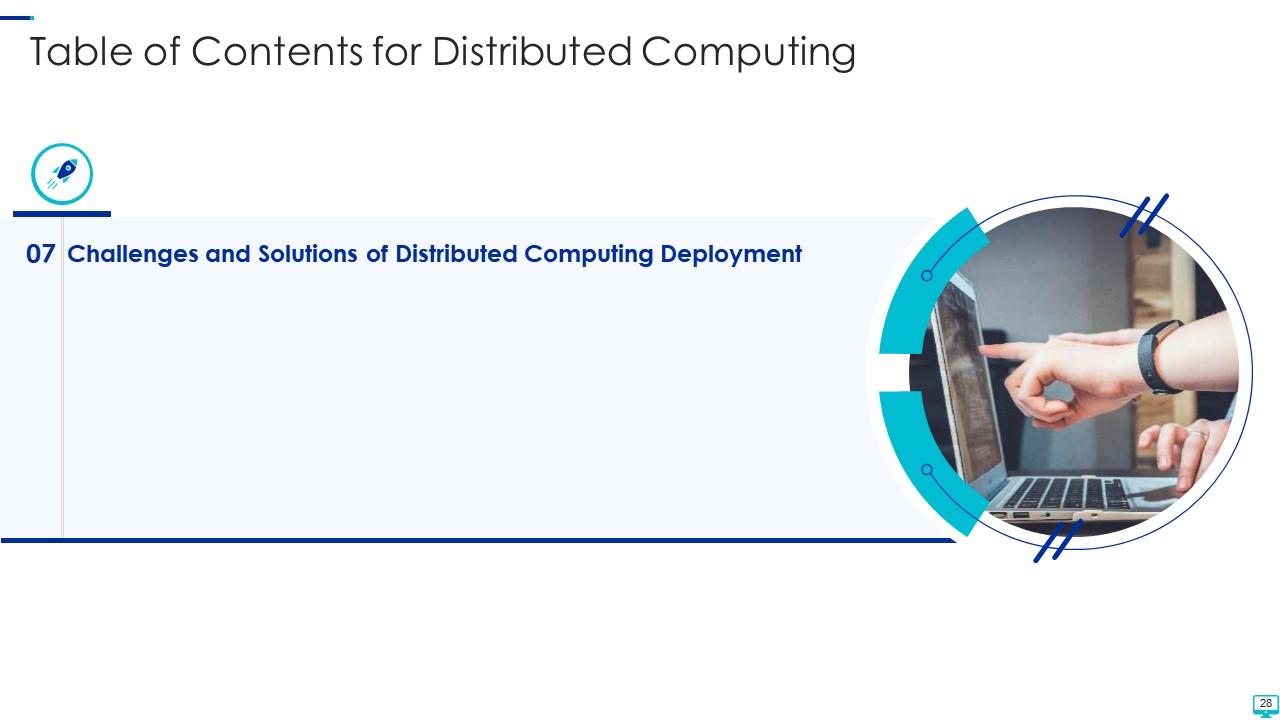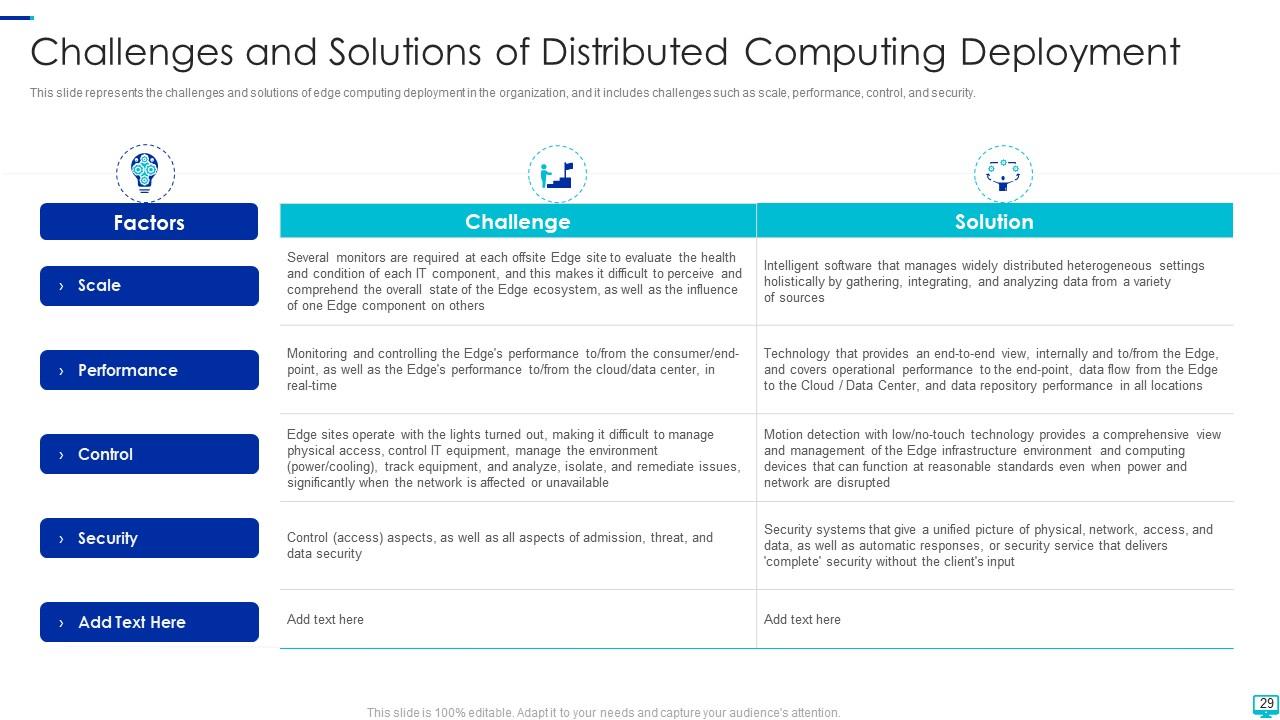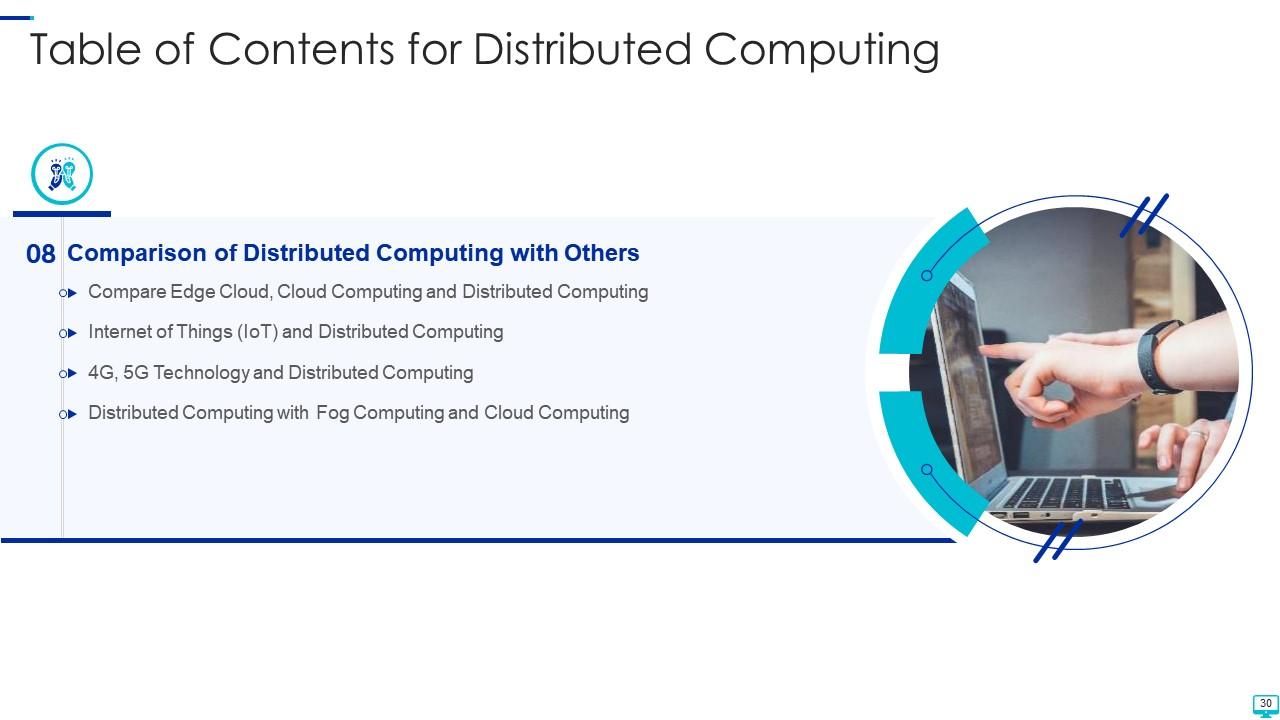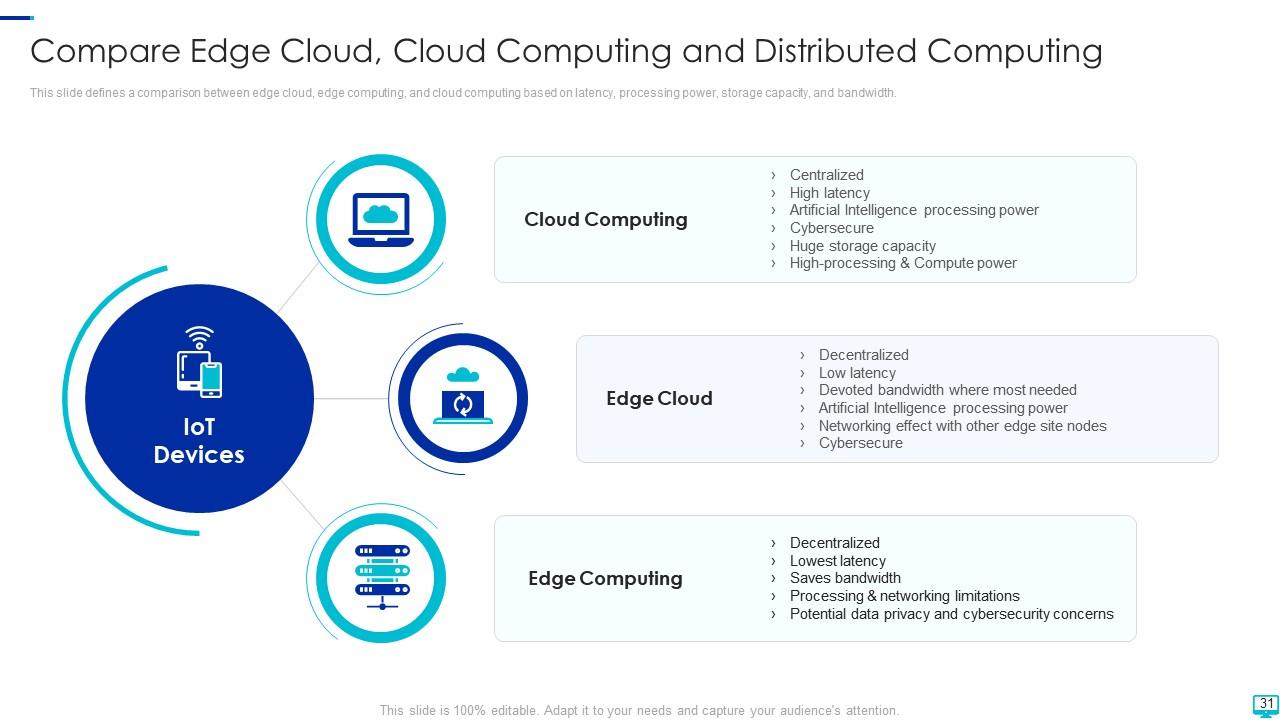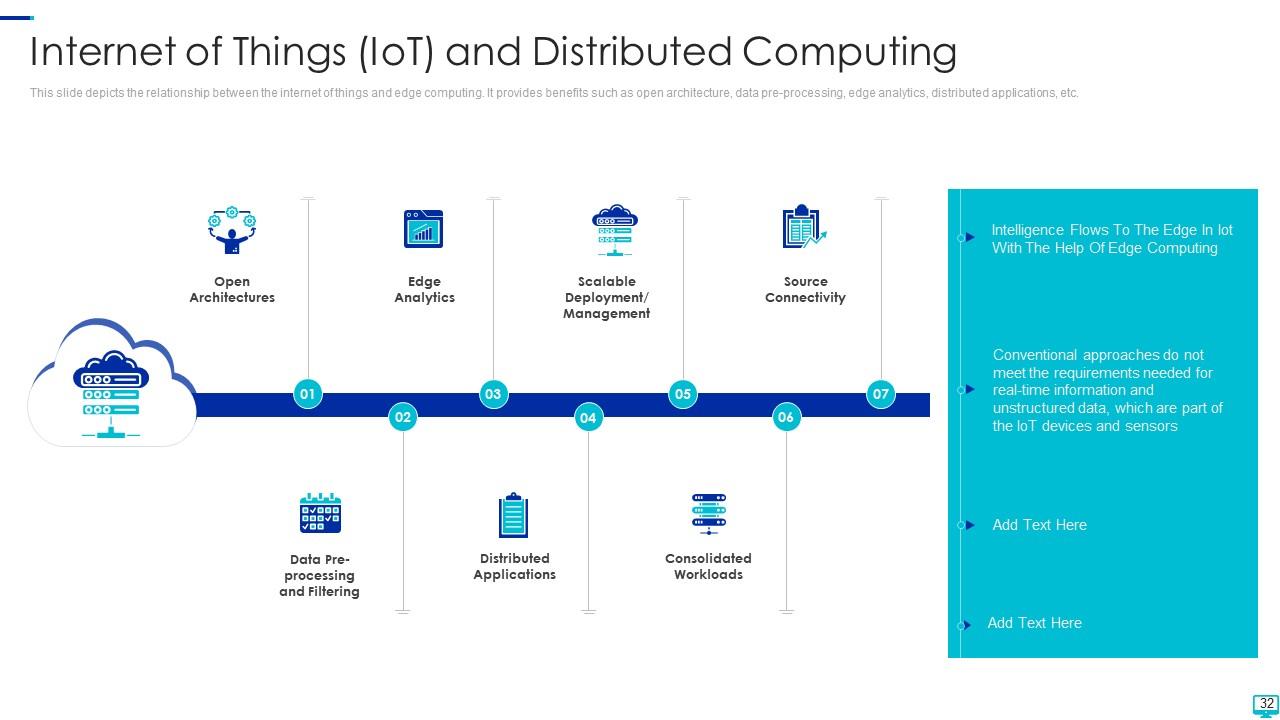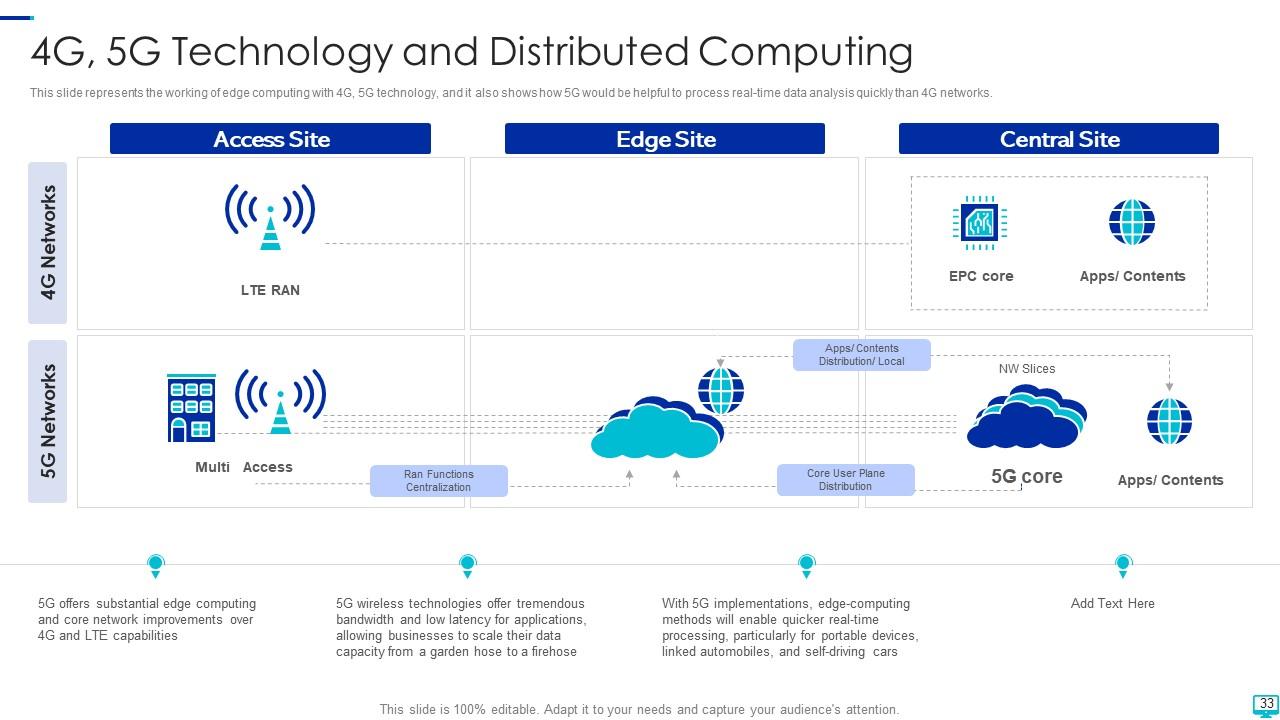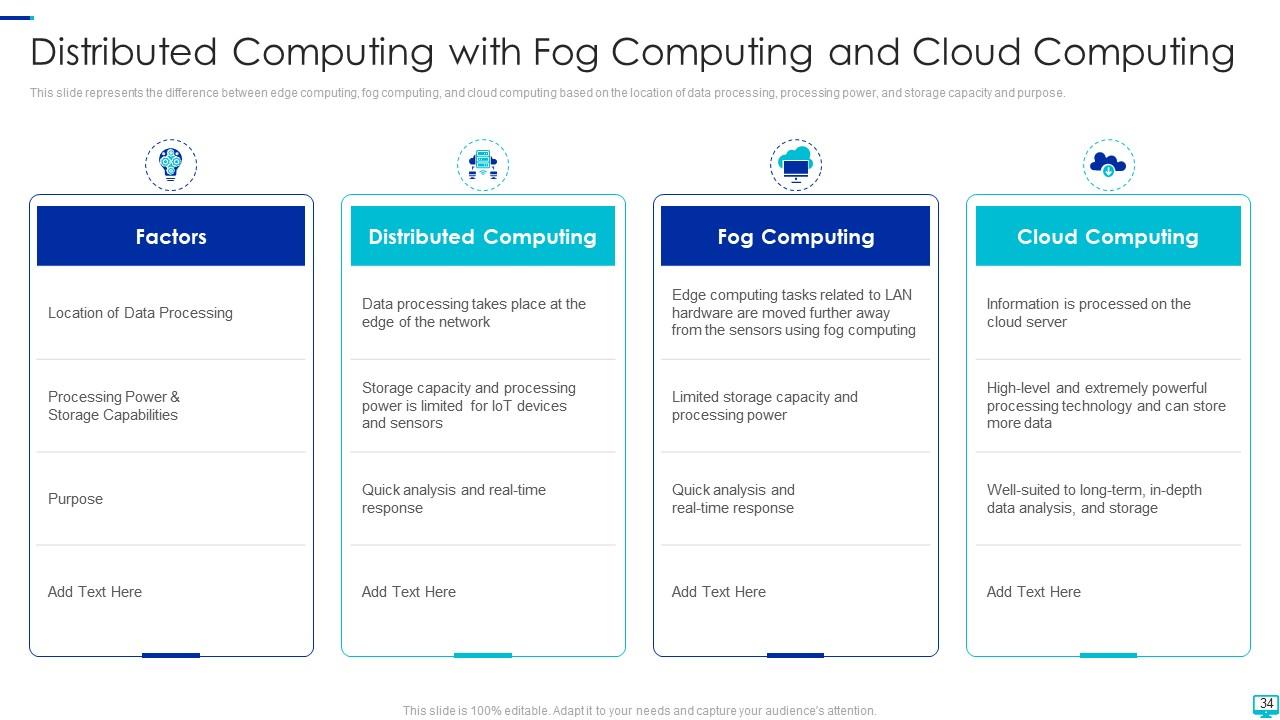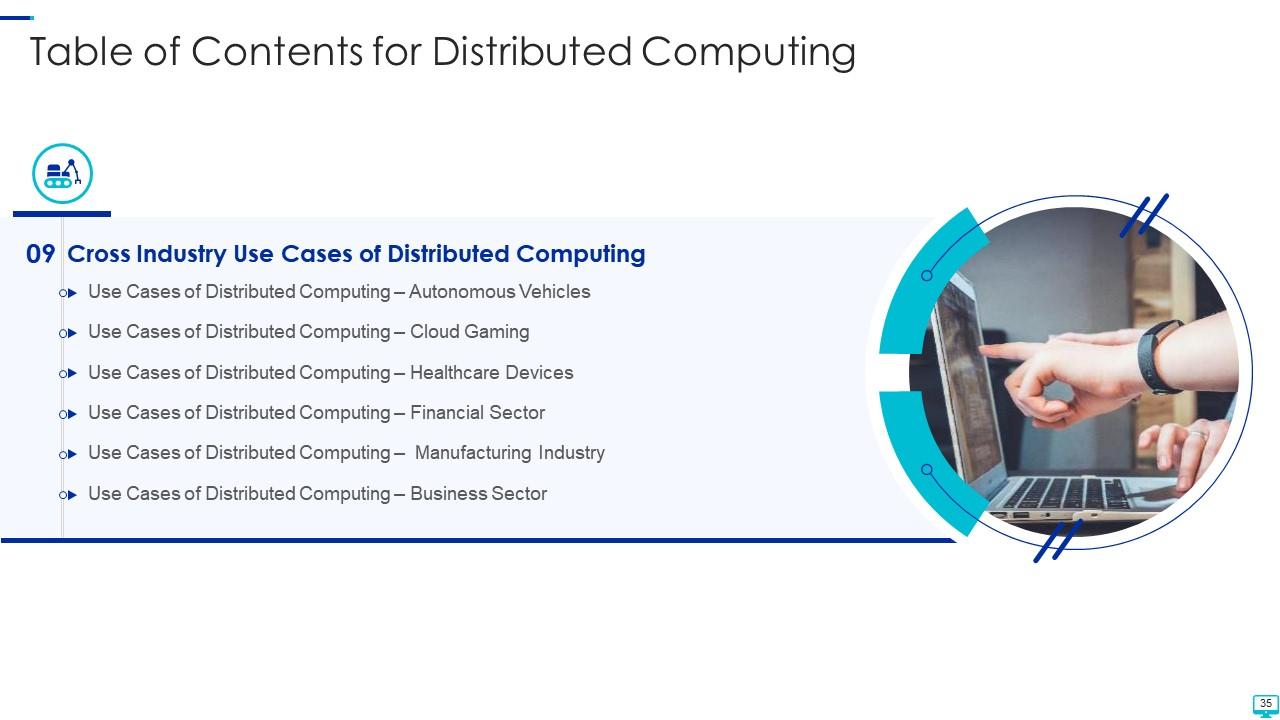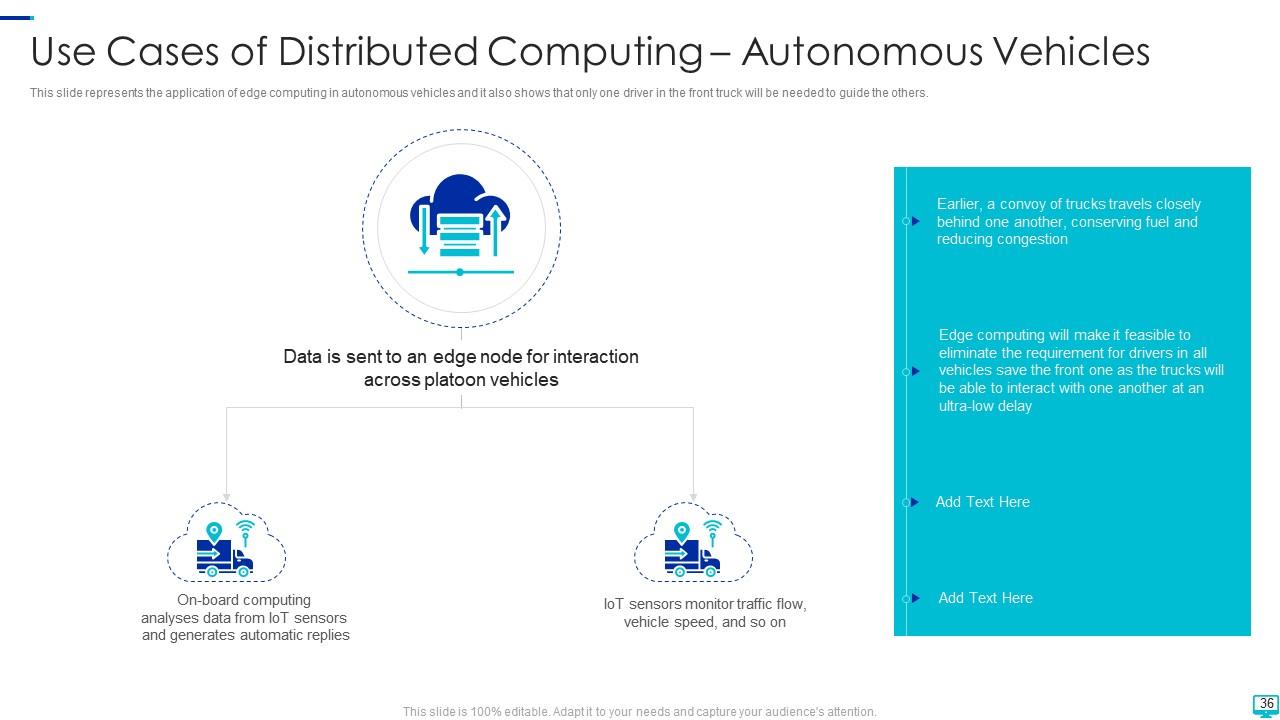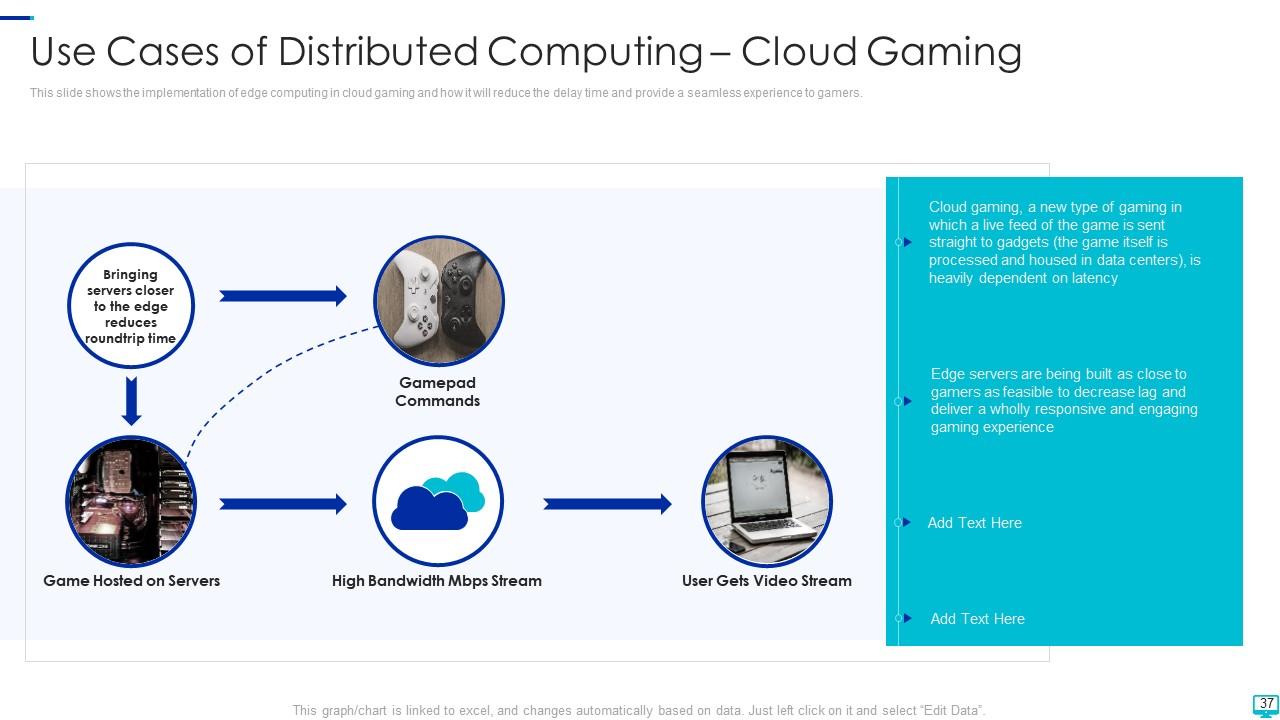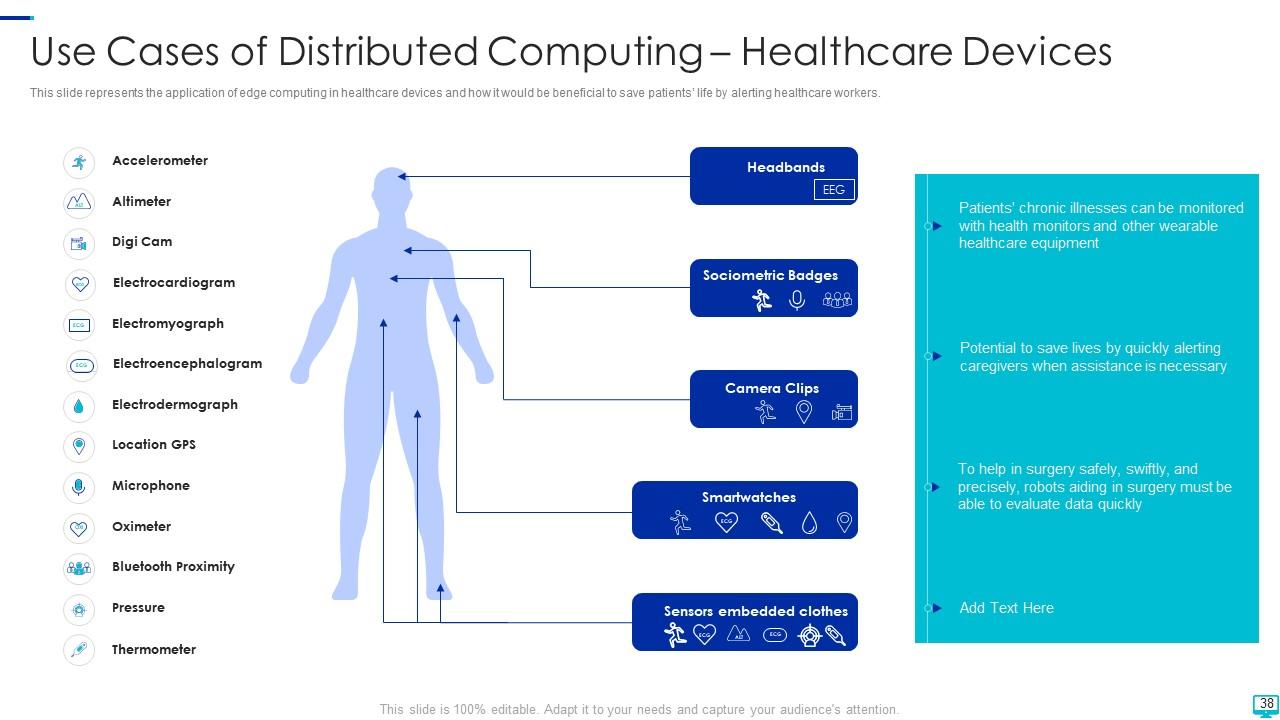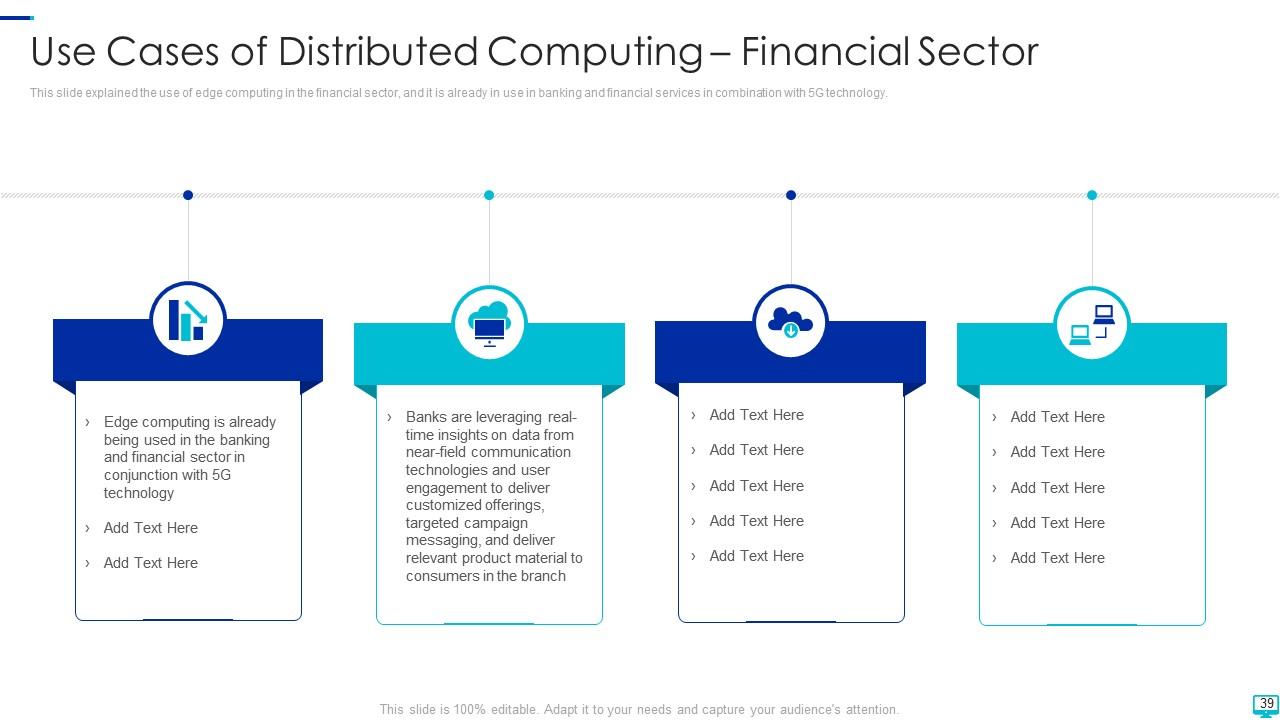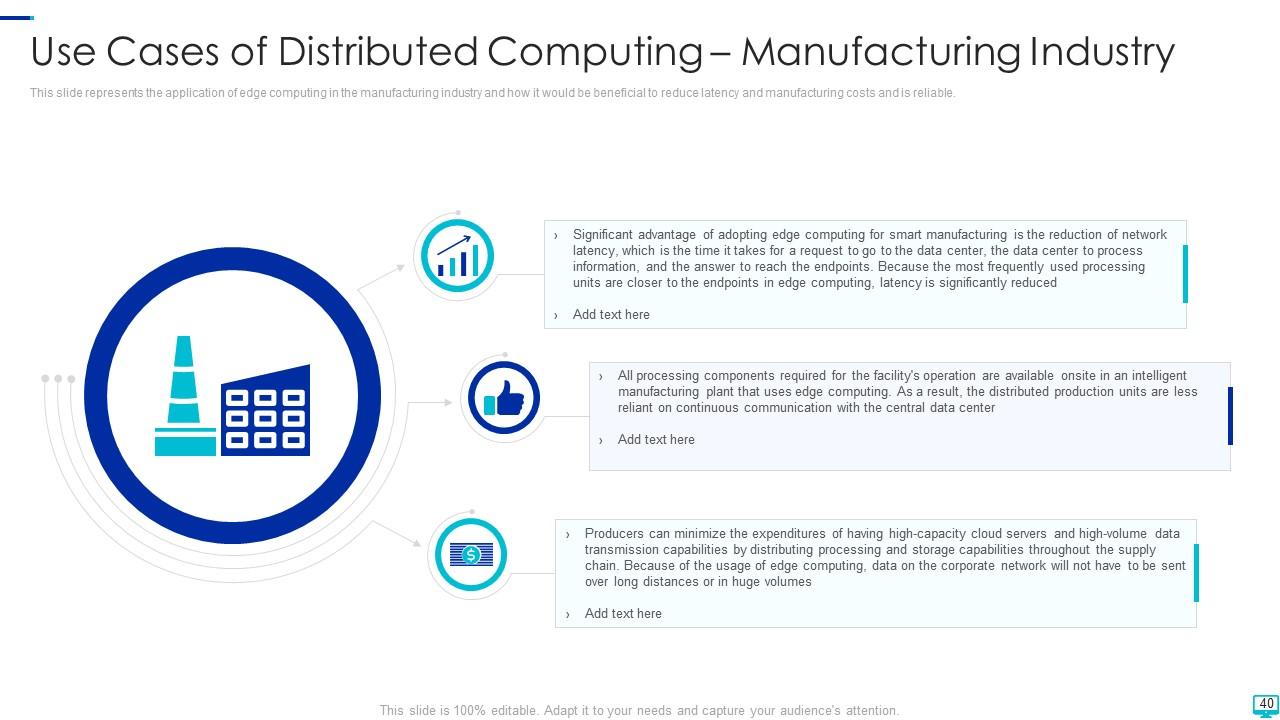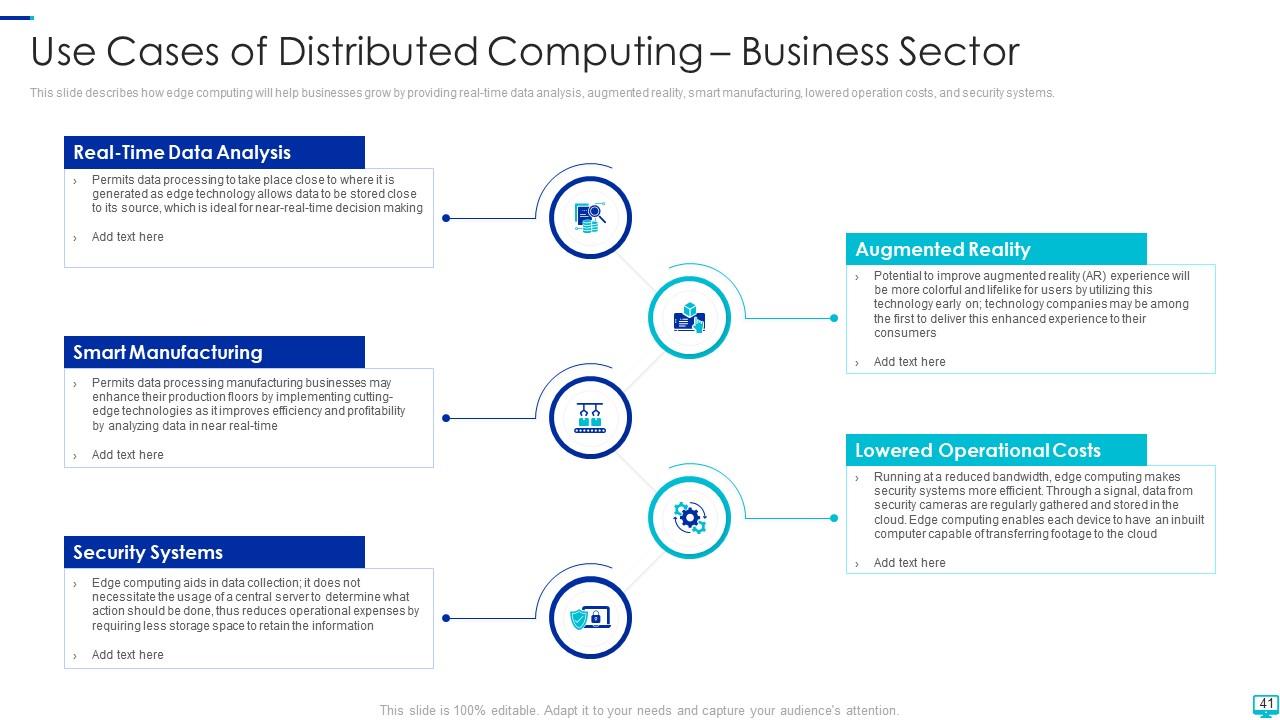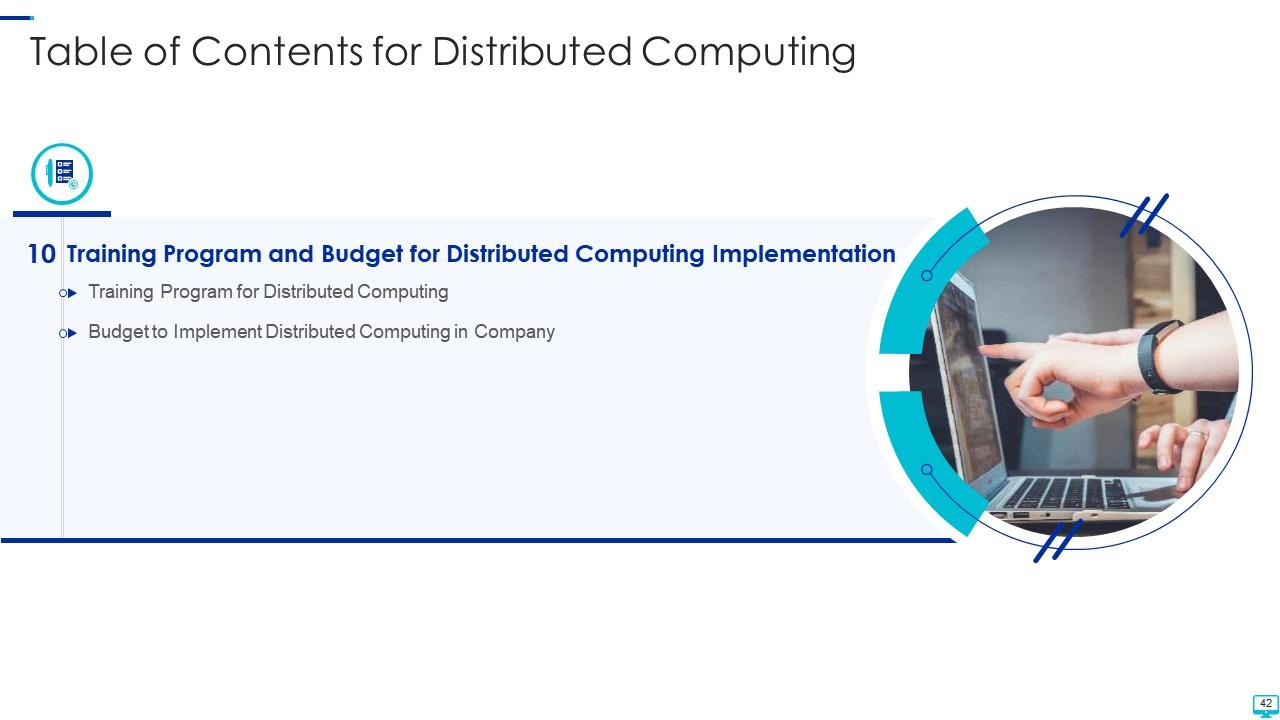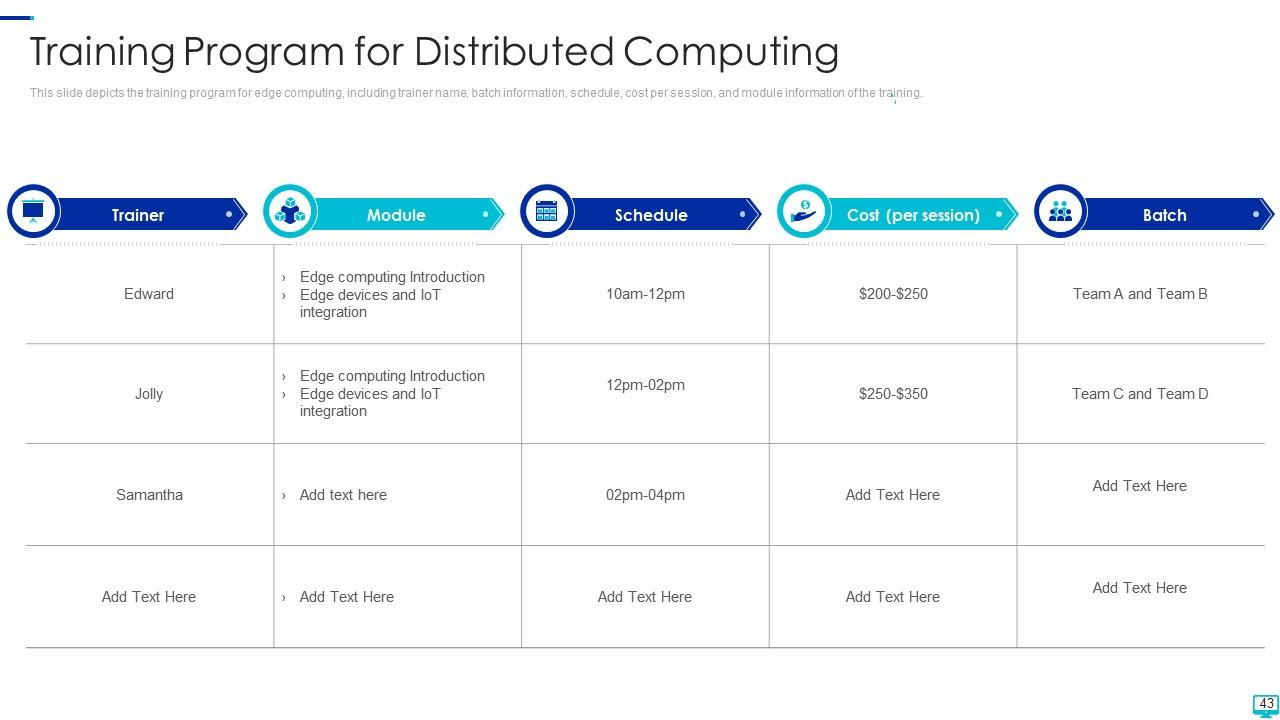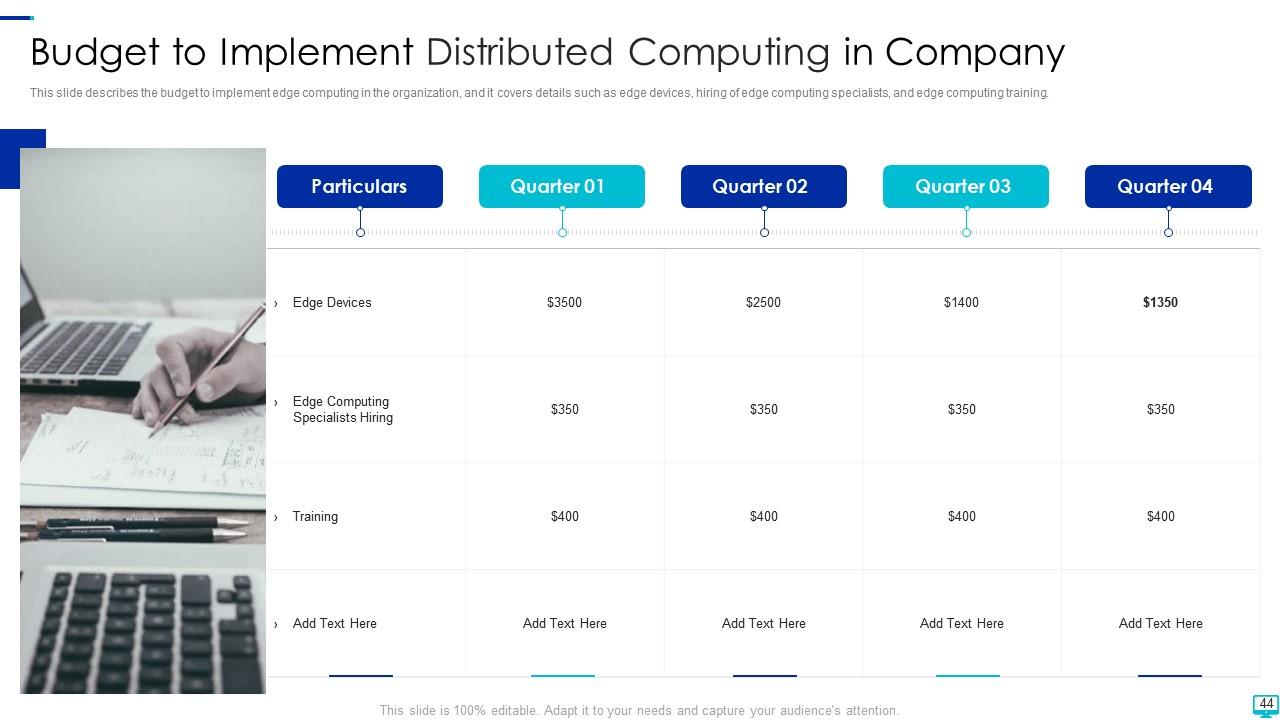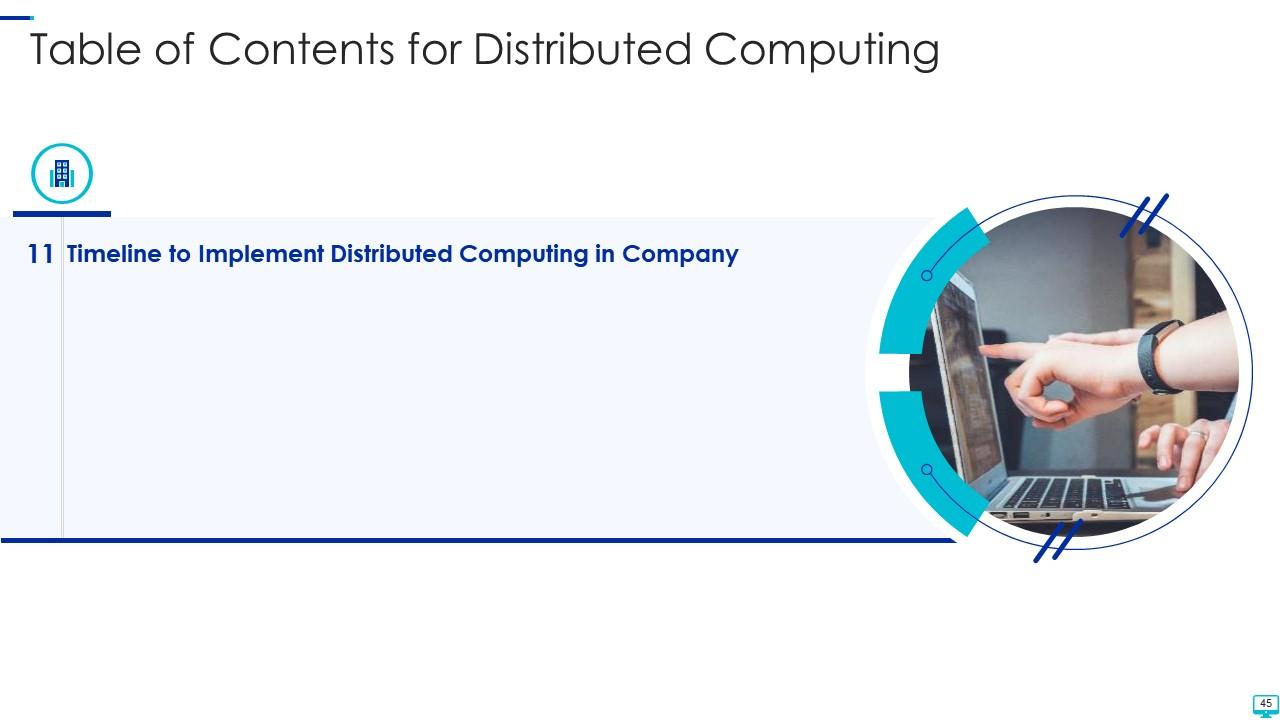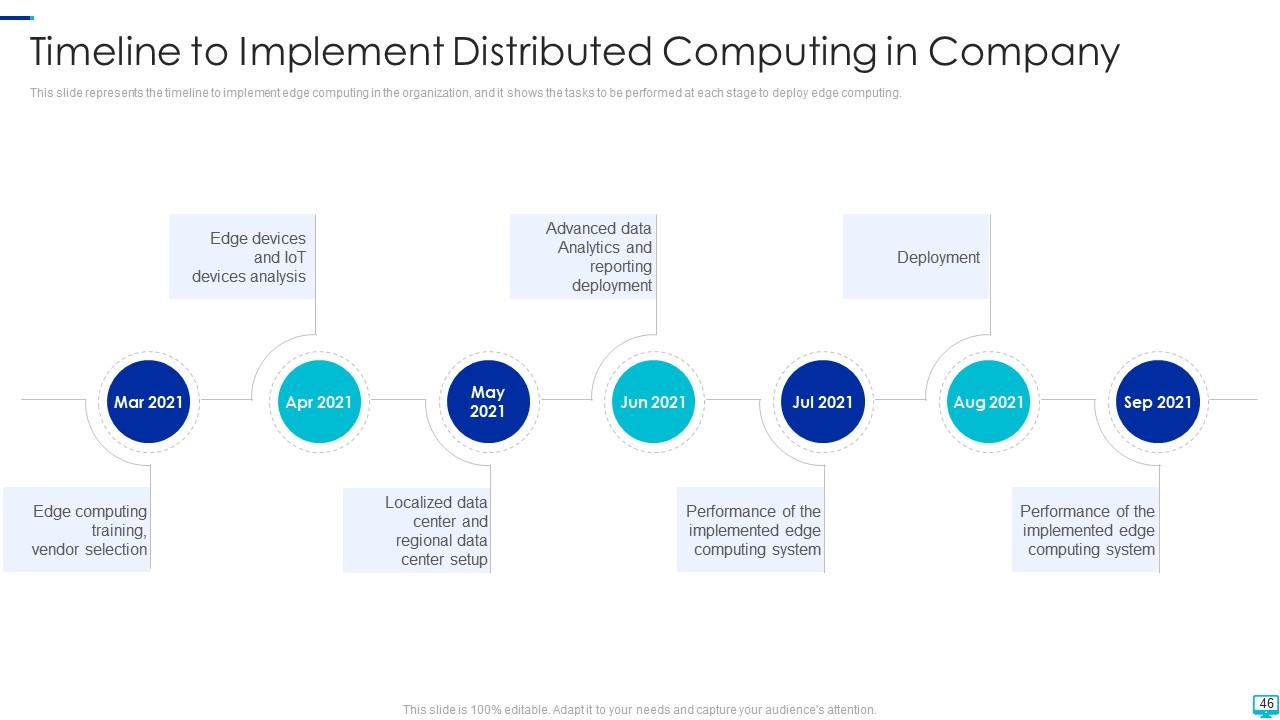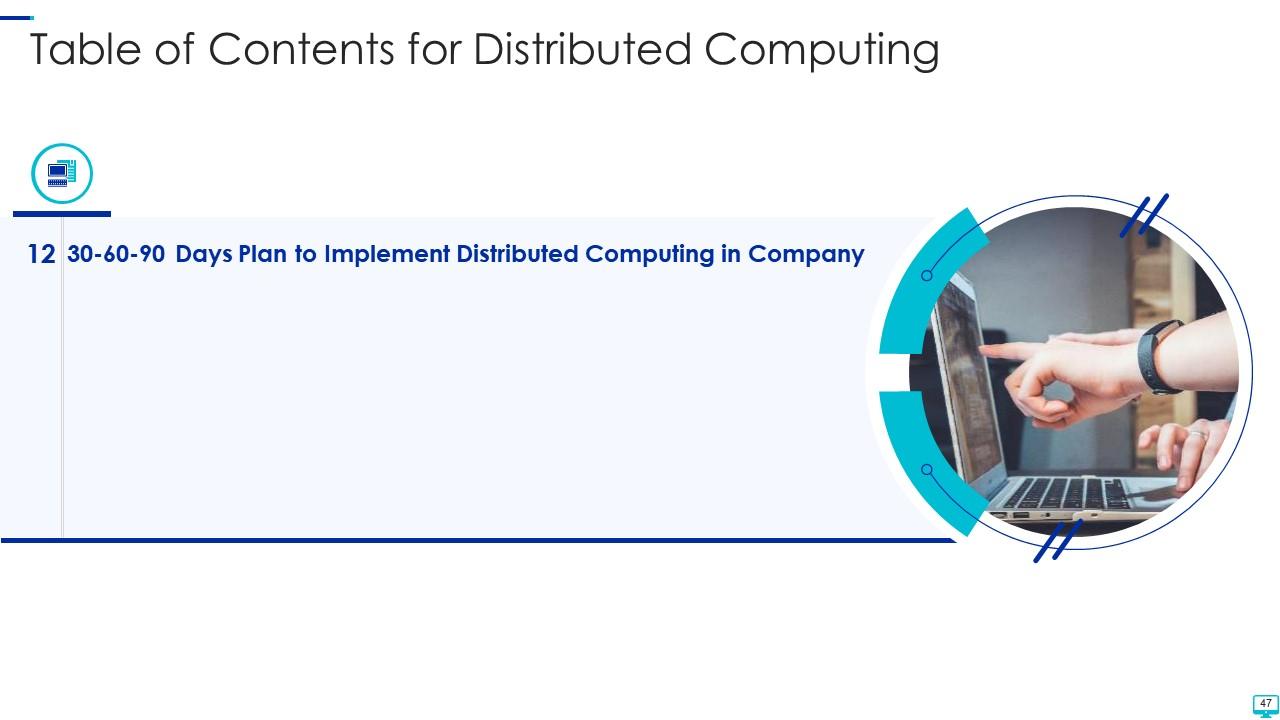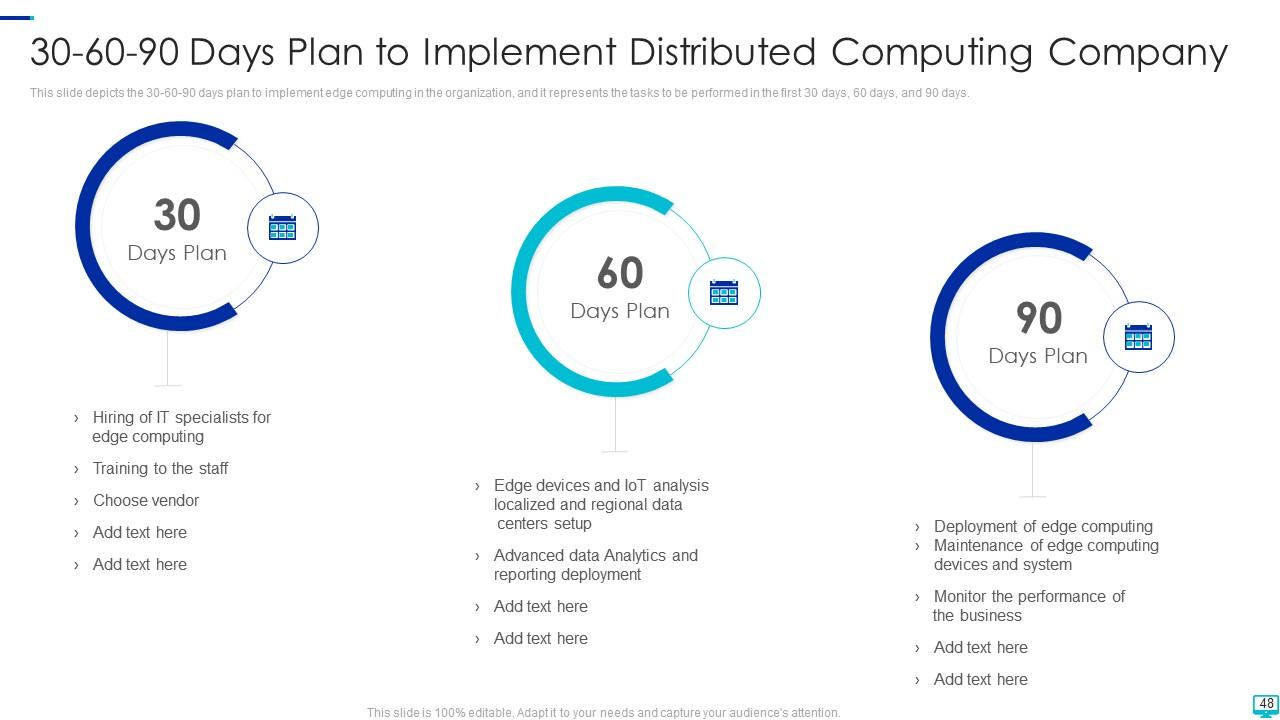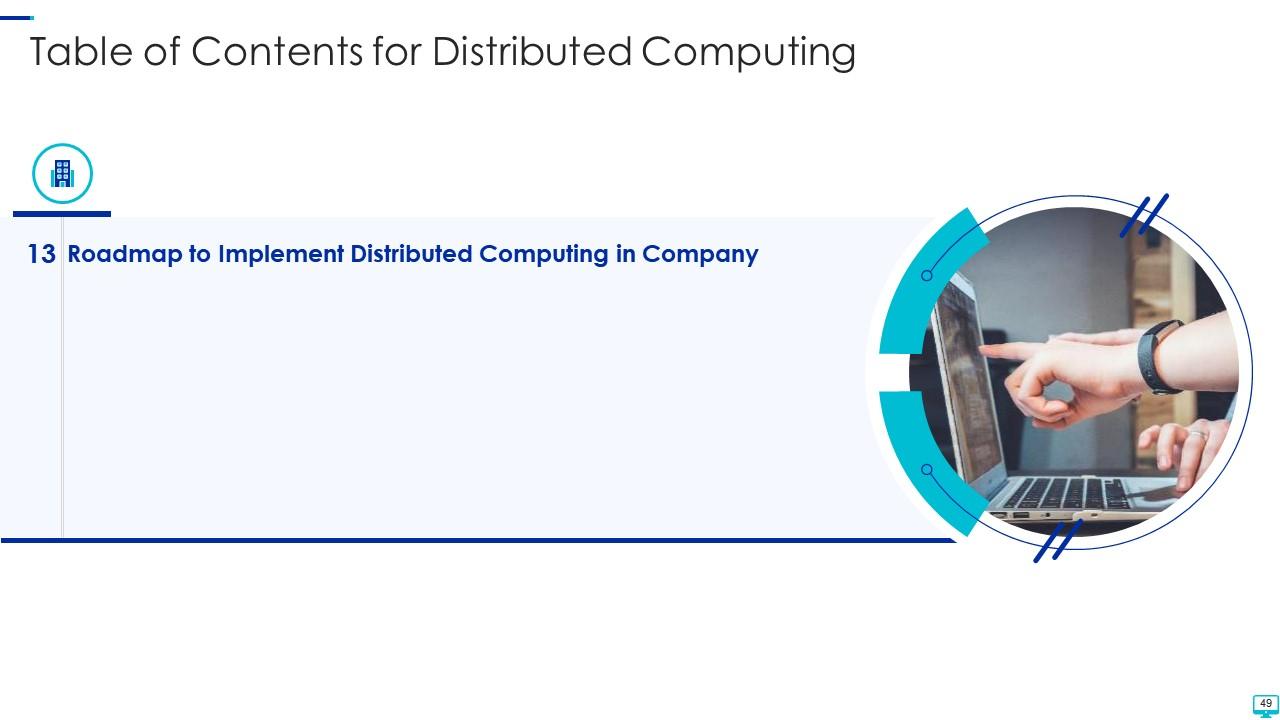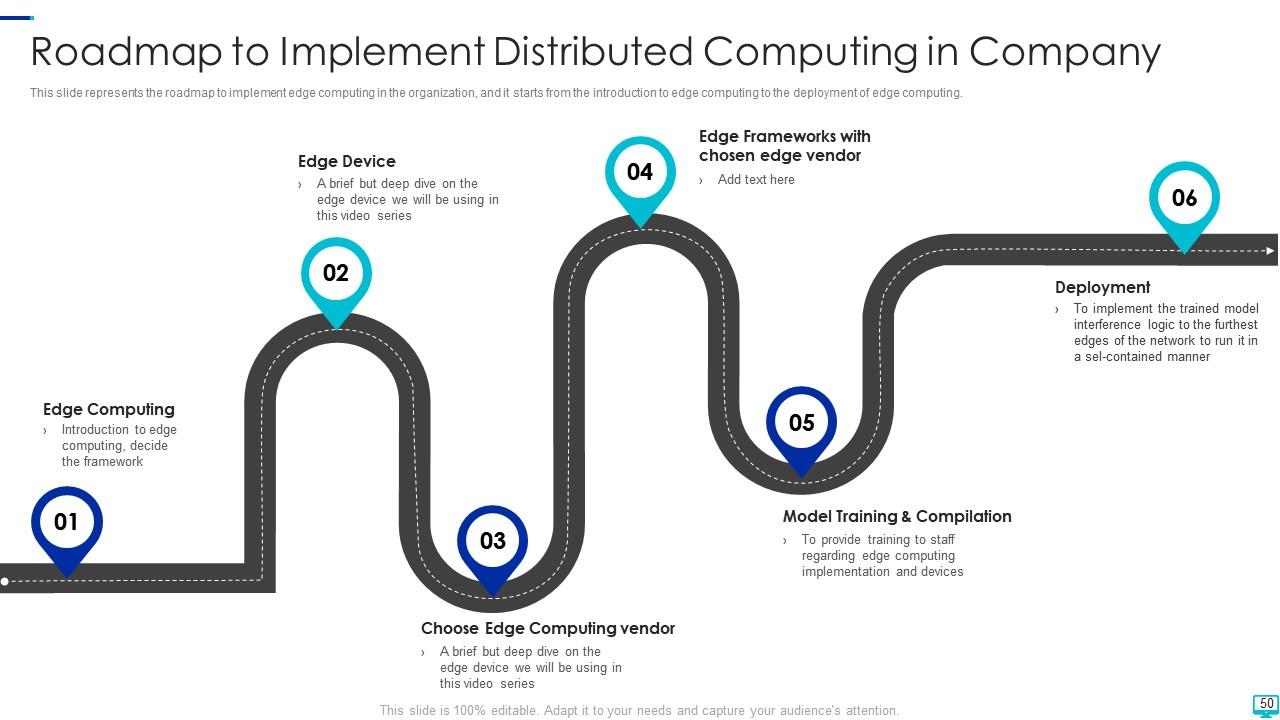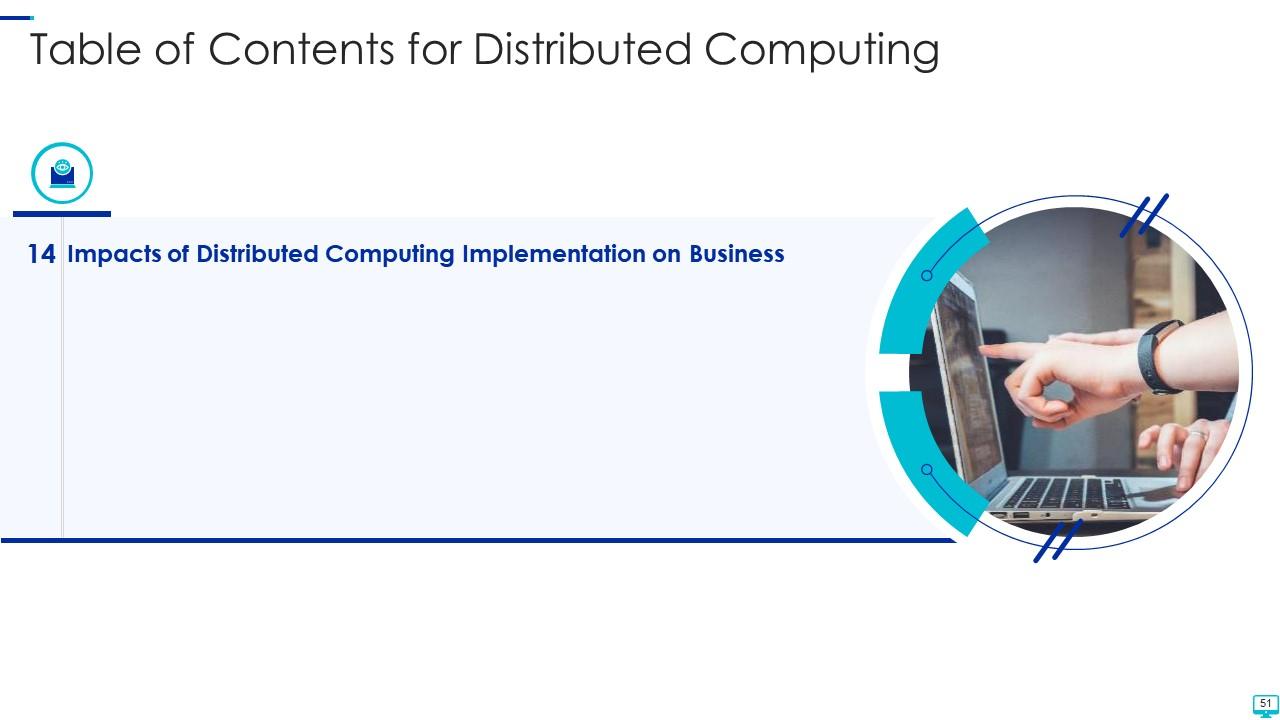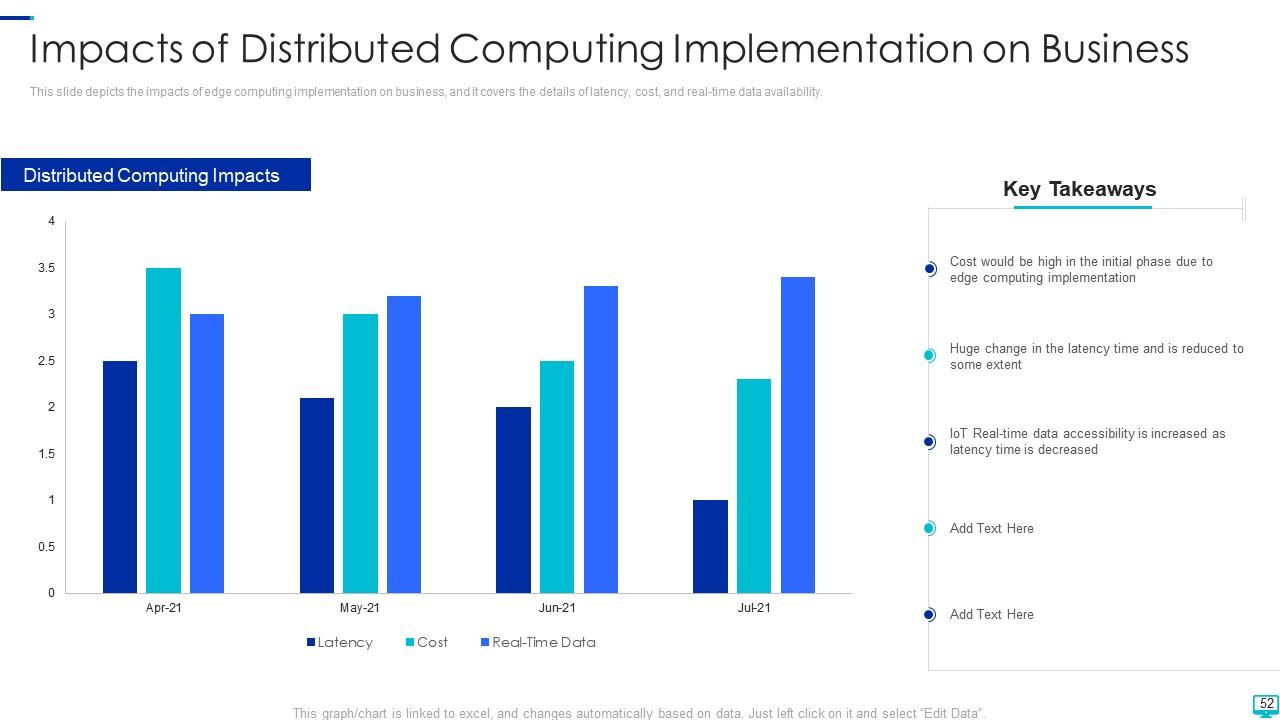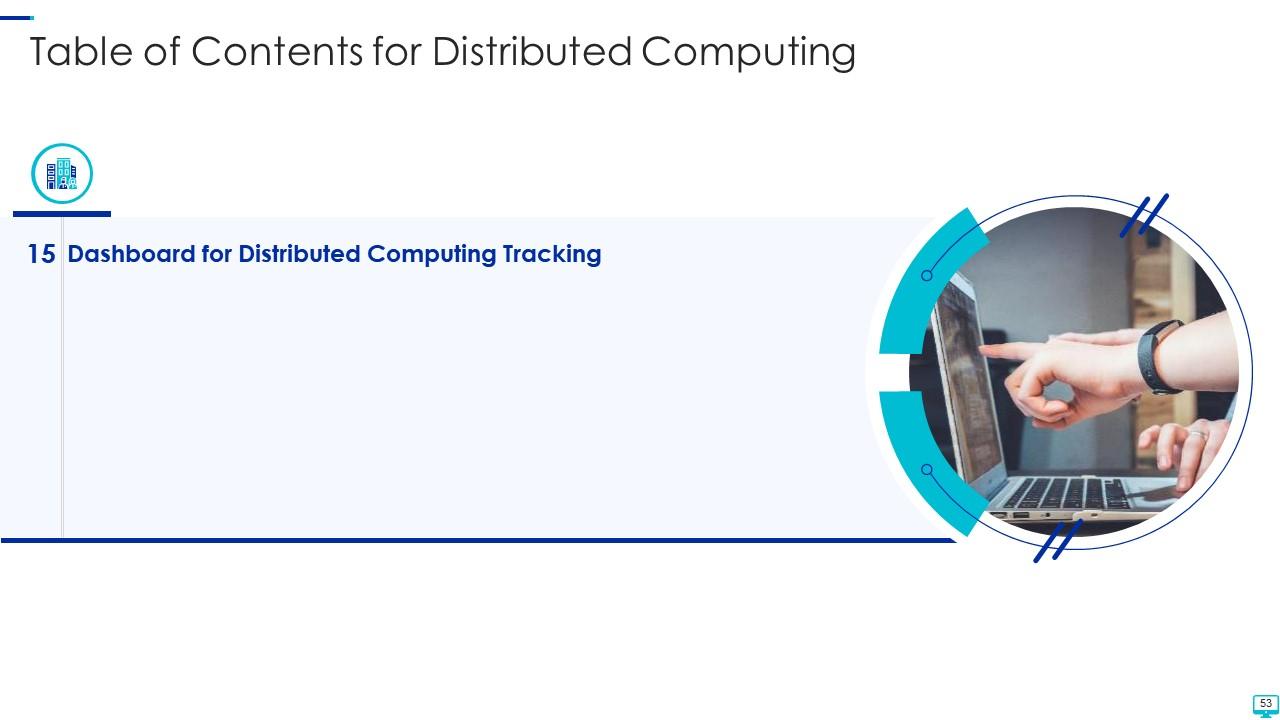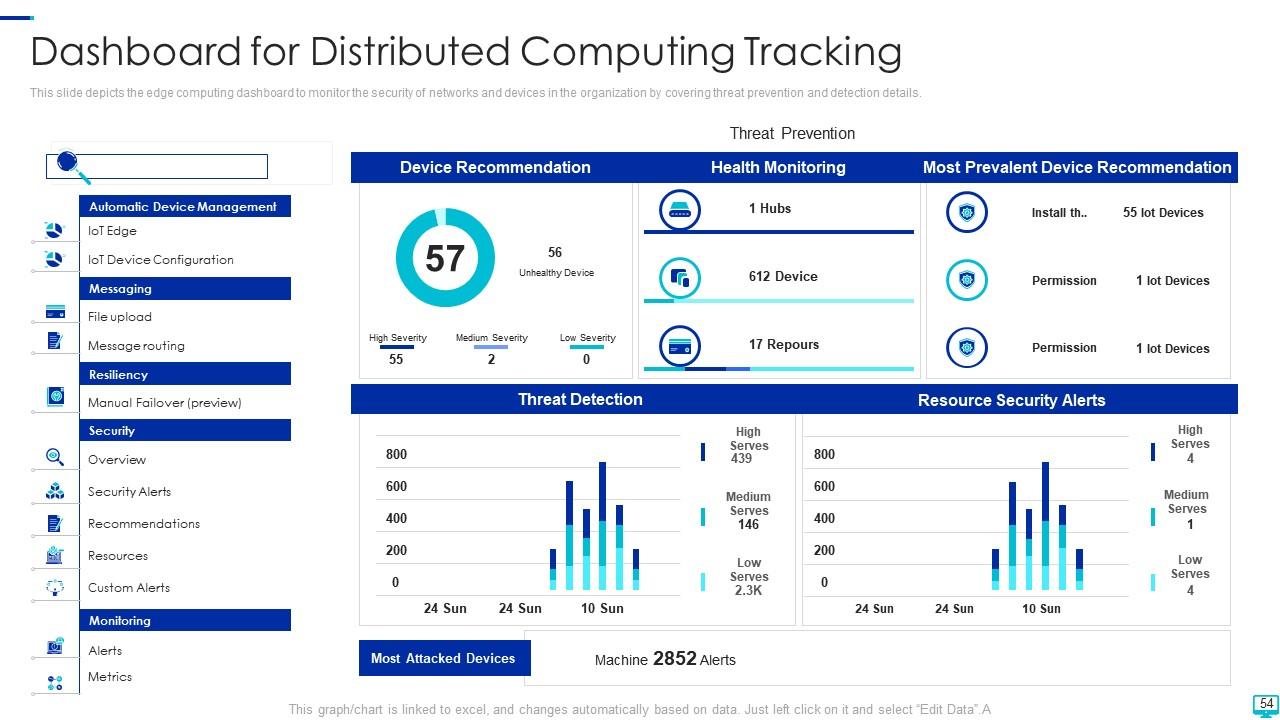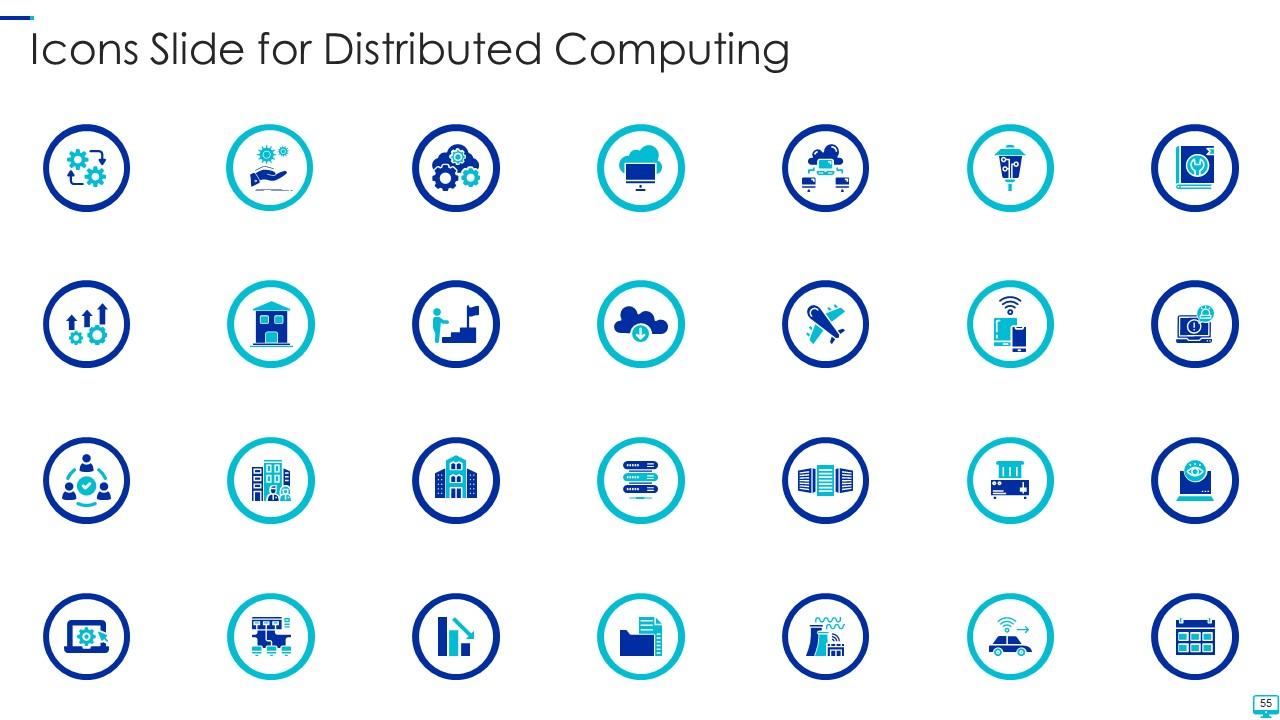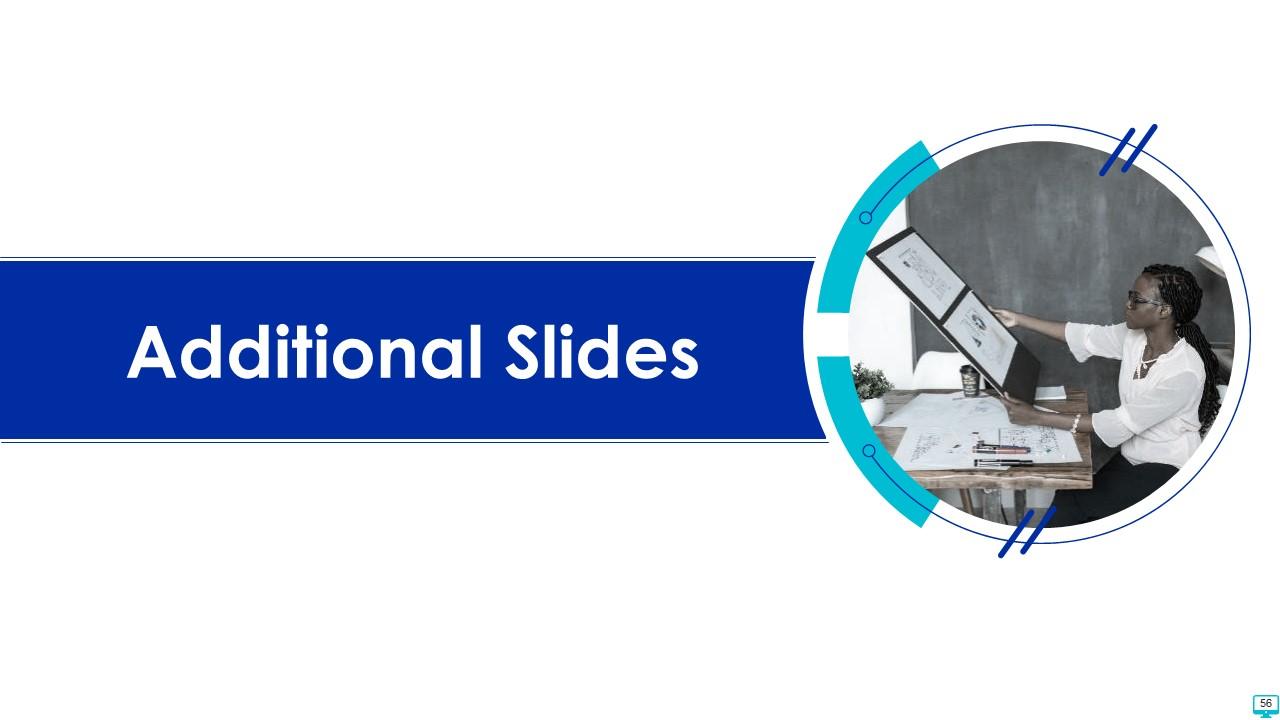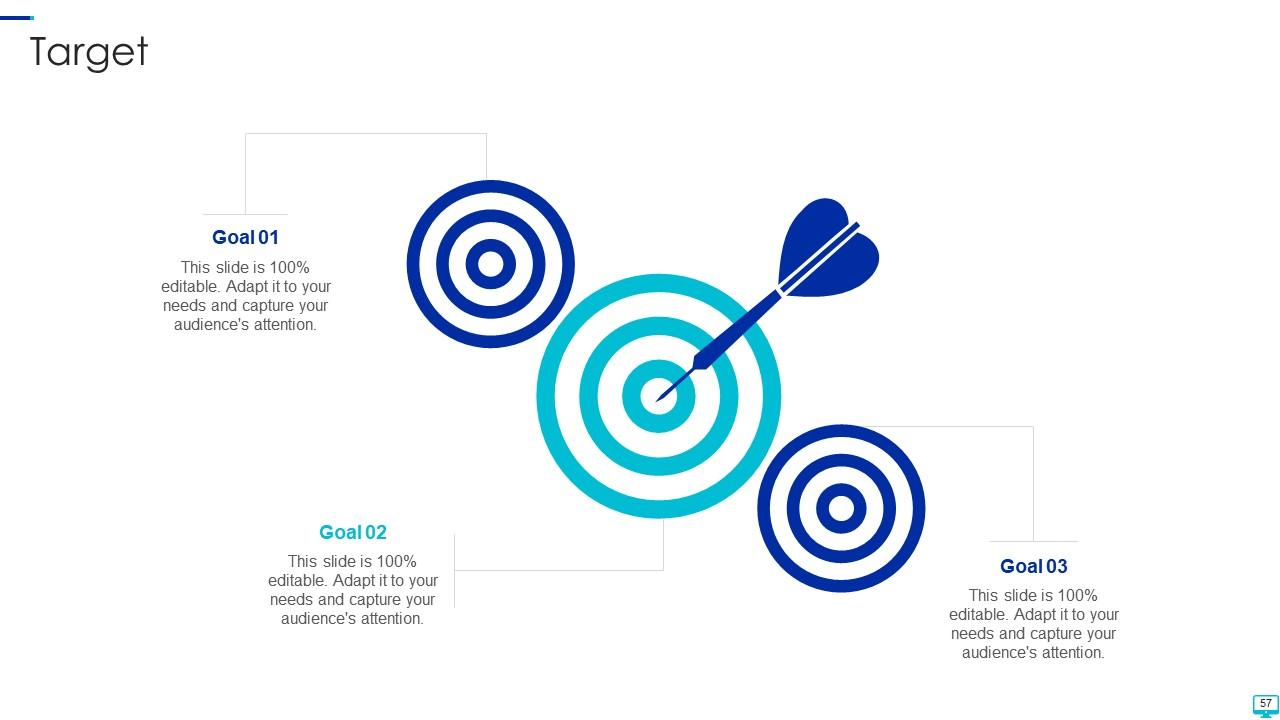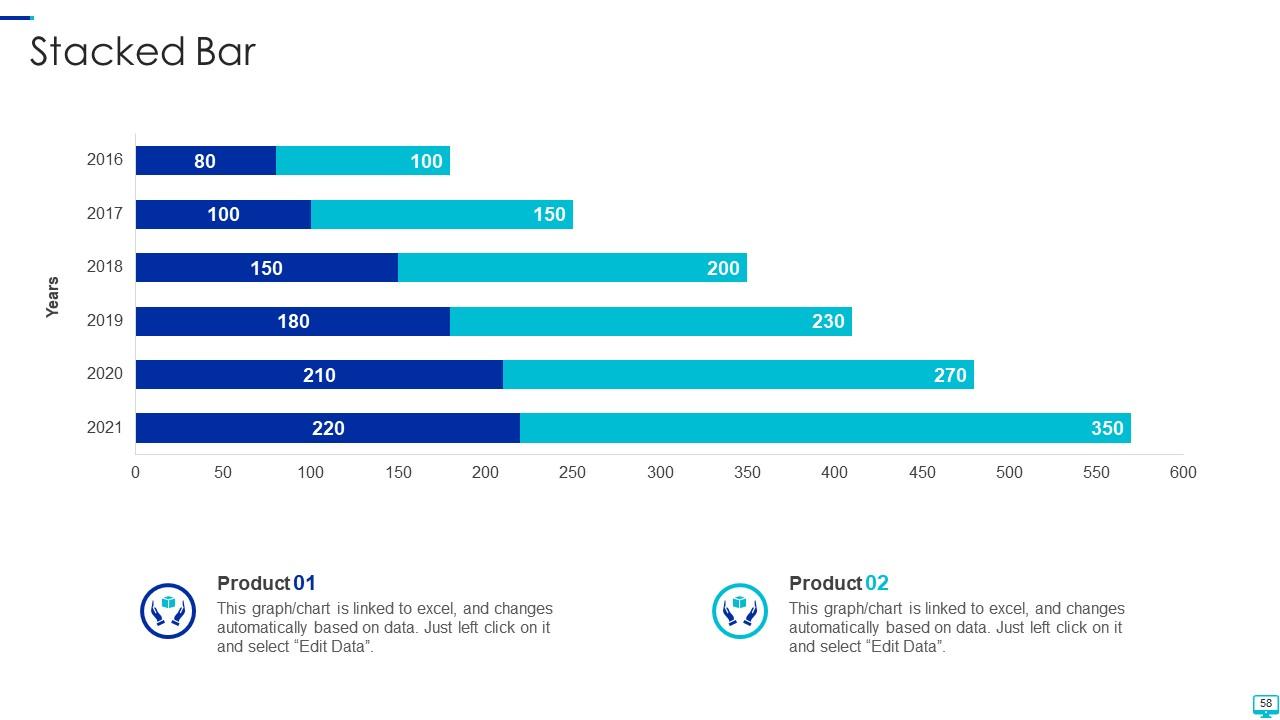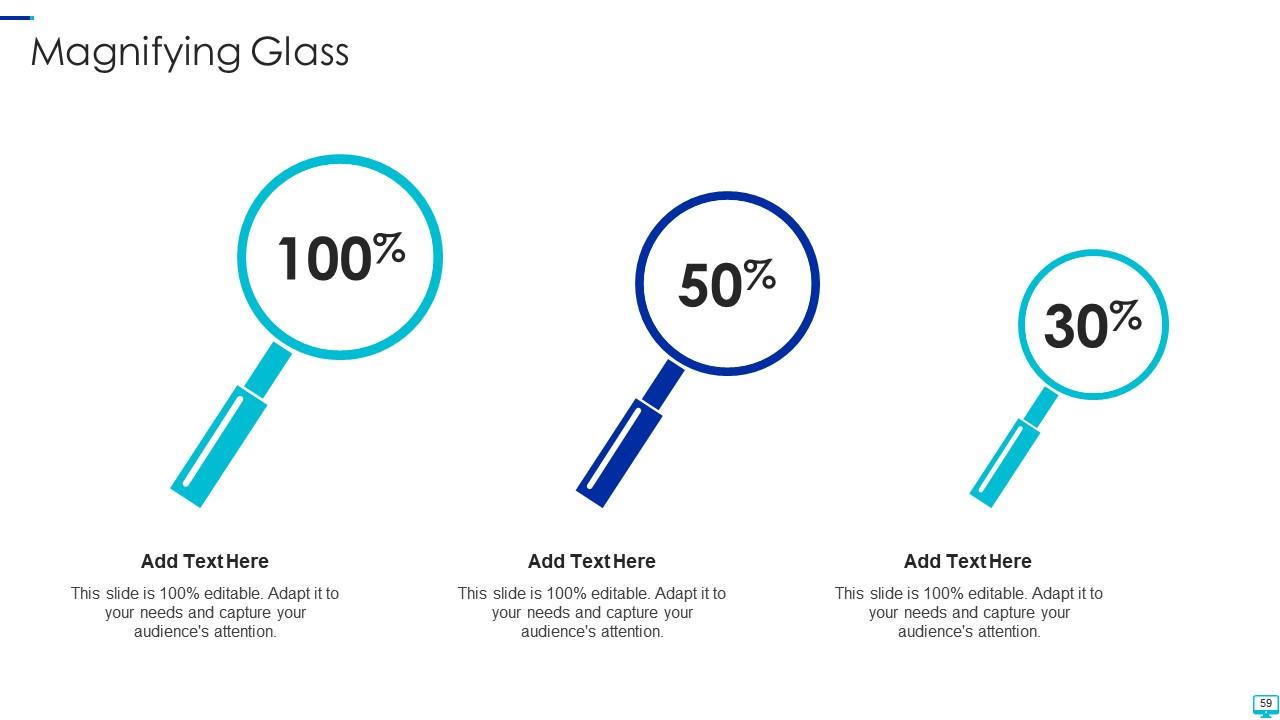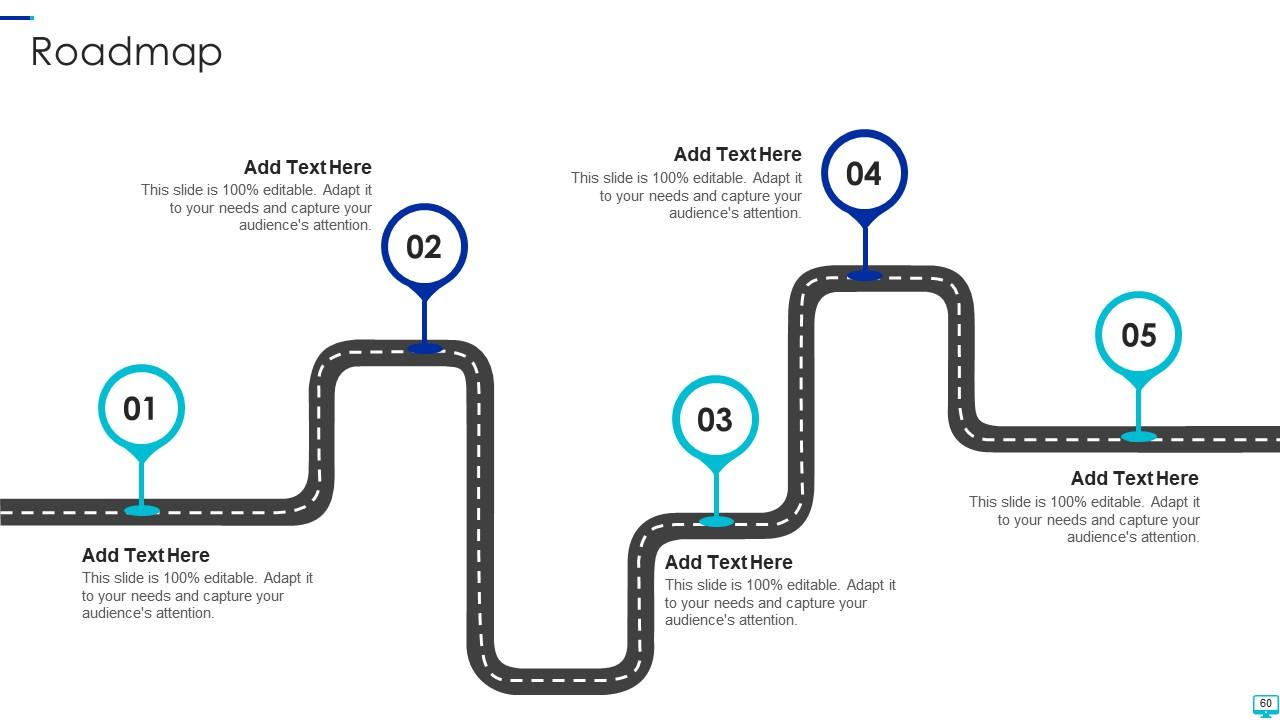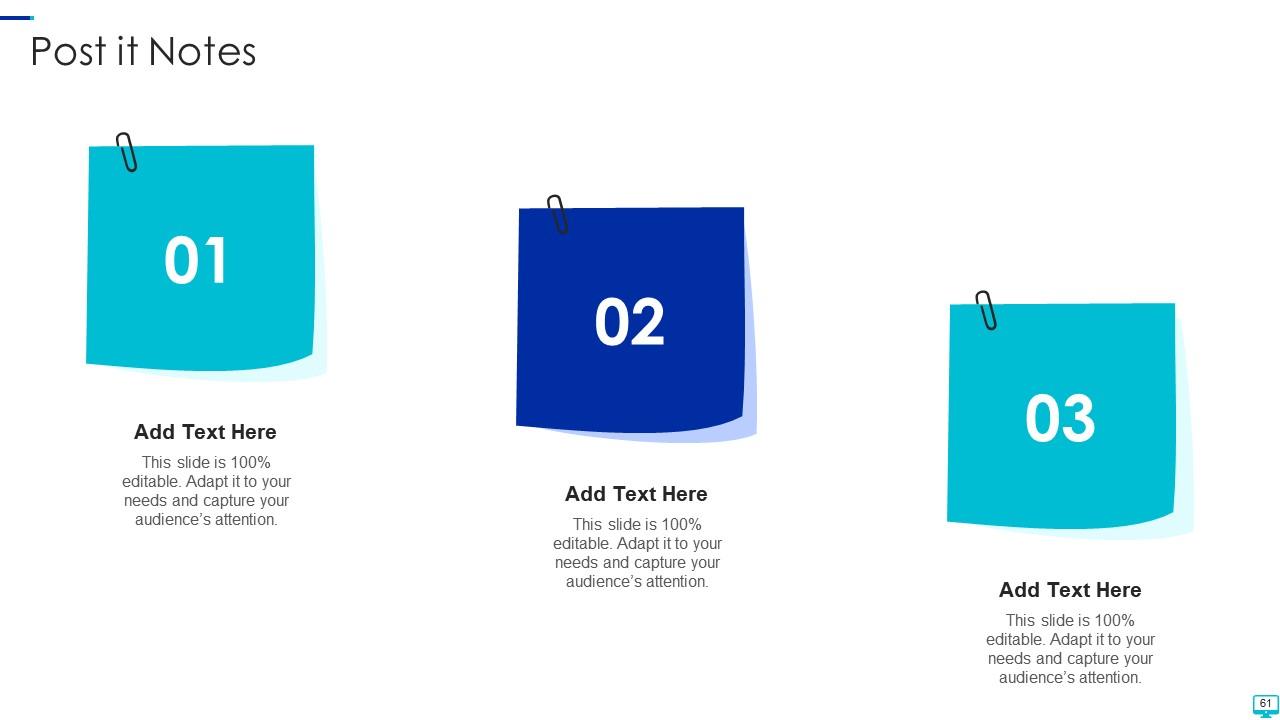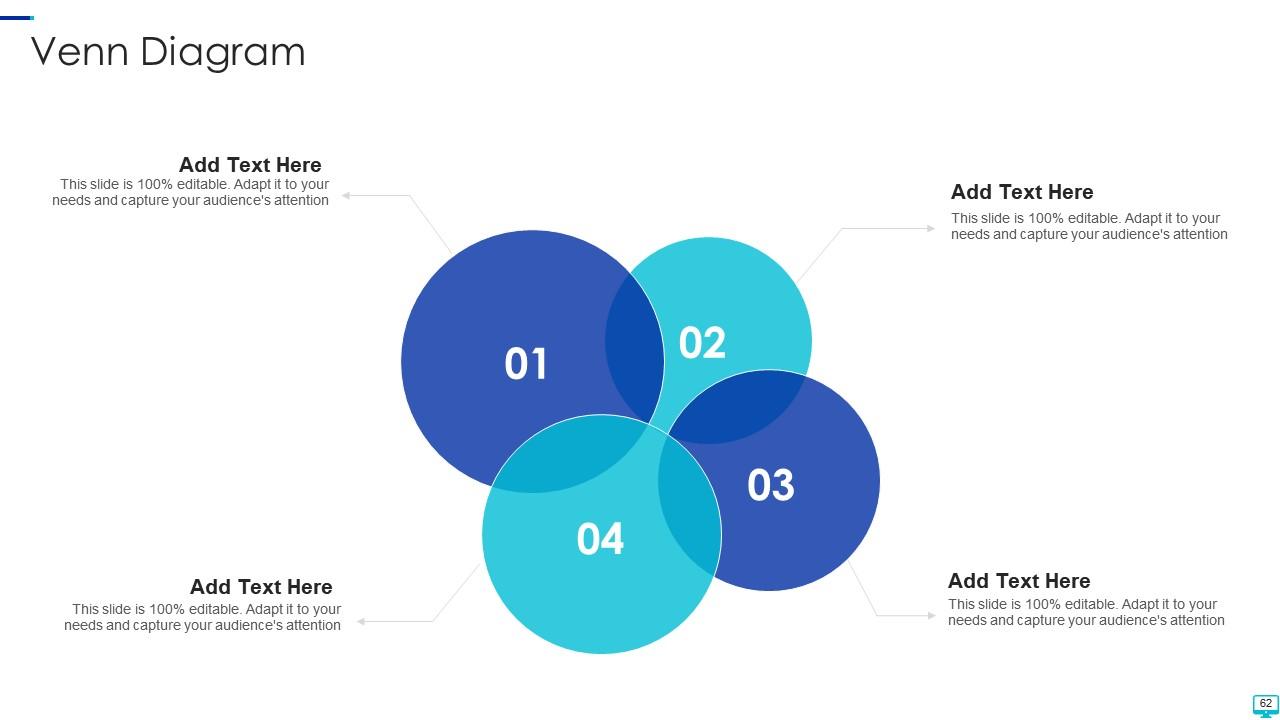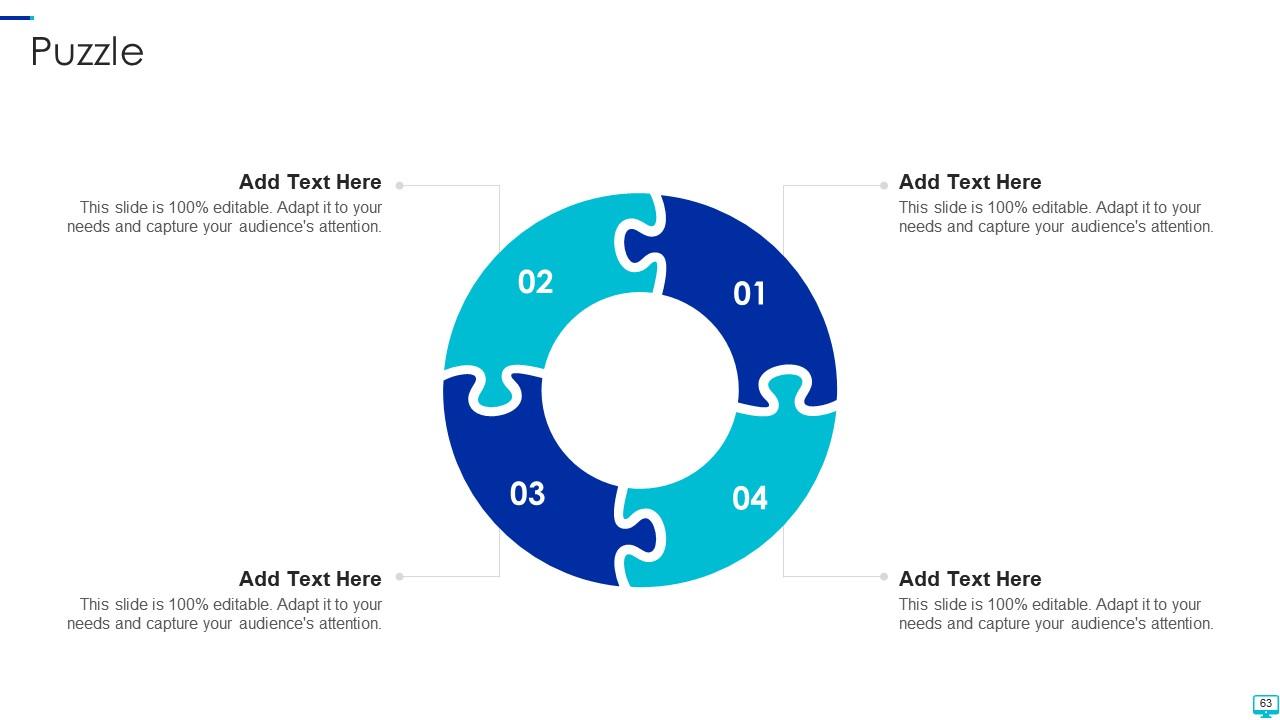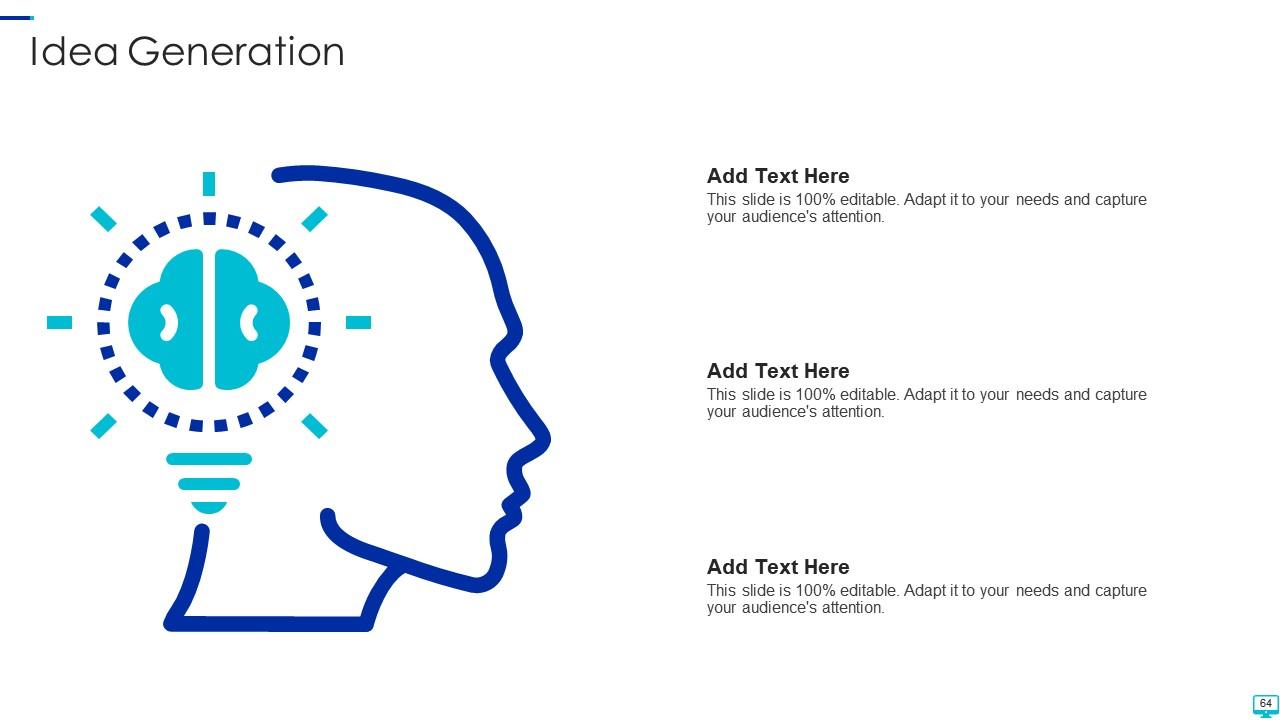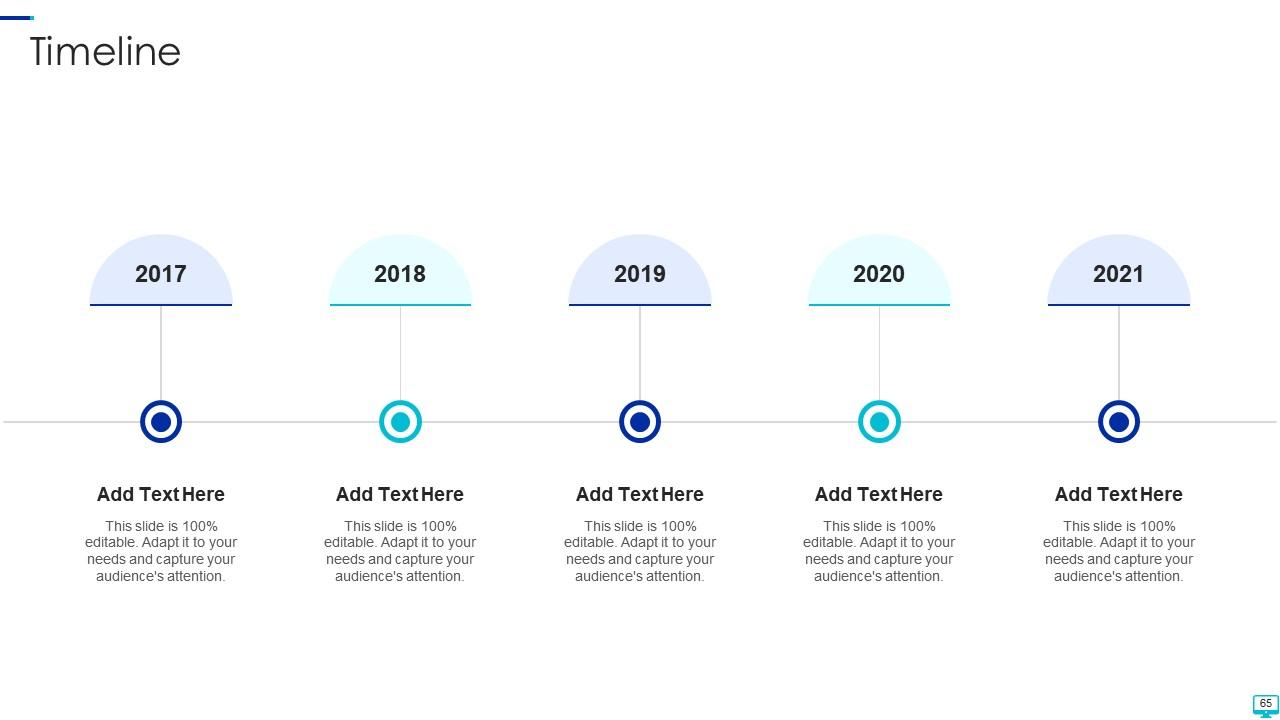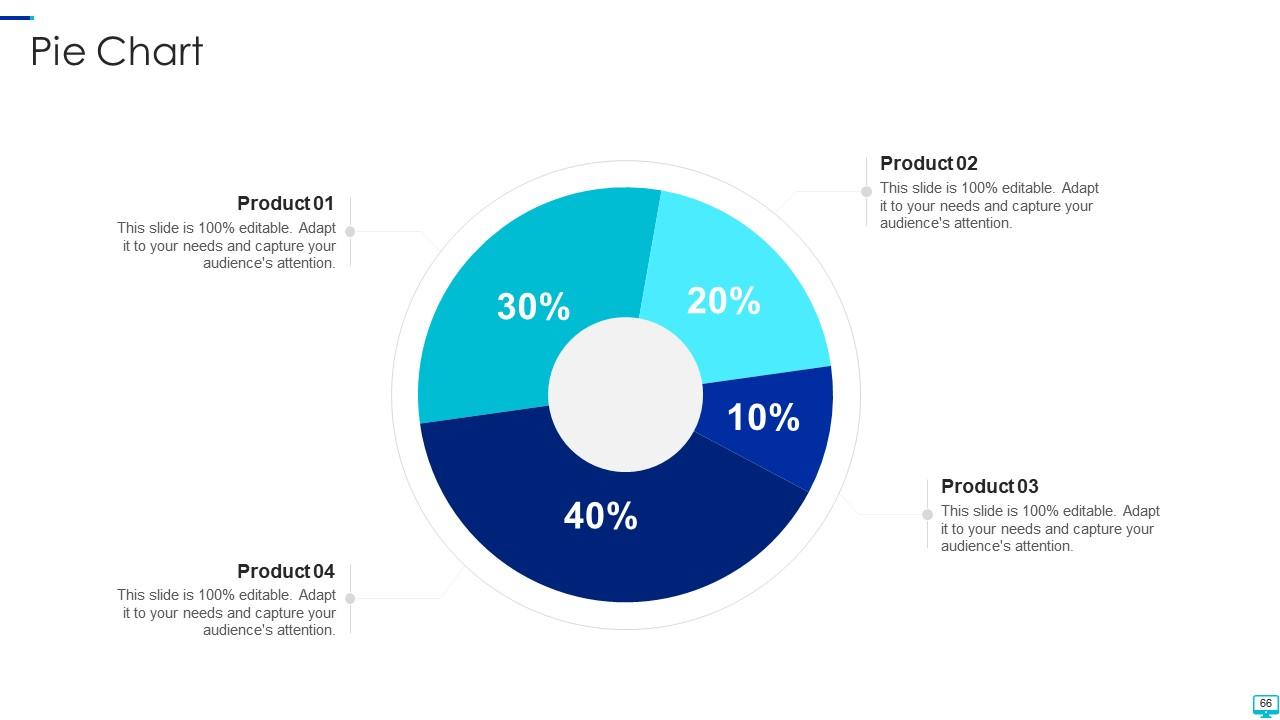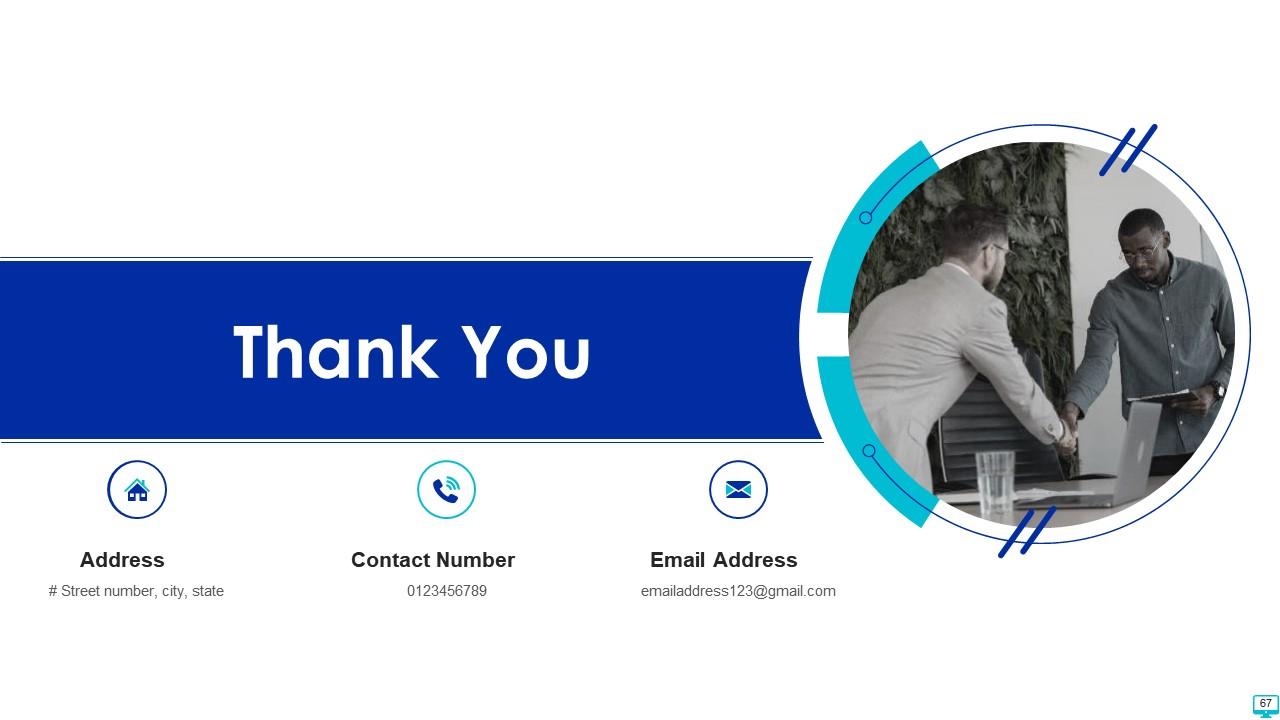Distributed computing powerpoint presentation slides
Distributed computing is an open IT infrastructure that enables mobile computing and Internet of Things IoT technologies by providing dispersed processing capacity. Here is an efficiently designed Distributed Computing template that gives a brief idea about problems experienced by organizations, existing cloud environments, etc. This PowerPoint presentation covered the current topology of organizational networks, gap analysis, benefits of distributed computing to the business, etc. In addition, this PPT contains an introduction of computing by covering topics network distribution, basic architecture, its working, best platforms, etc. Furthermore, this template includes the security of data and networks, a checklist to implement computing, etc. Moreover, this PPT compares distributed computing with Fog Computing, Internet of Things IoT, Cloud Computing, 4G and 5G technology, etc. Lastly, this Distributed Computing deck comprises a training program, budget, timeline, a 30-60-90 days plan, roadmap, dashboard, and impacts of computing after implementing in the organization. Book a free demo with our research team and customize this 100 percent editable template based on your needs. Get access now.
Distributed computing is an open IT infrastructure that enables mobile computing and Internet of Things IoT technologies by..
- Google Slides is a new FREE Presentation software from Google.
- All our content is 100% compatible with Google Slides.
- Just download our designs, and upload them to Google Slides and they will work automatically.
- Amaze your audience with SlideTeam and Google Slides.
-
Want Changes to This PPT Slide? Check out our Presentation Design Services
- WideScreen Aspect ratio is becoming a very popular format. When you download this product, the downloaded ZIP will contain this product in both standard and widescreen format.
-

- Some older products that we have may only be in standard format, but they can easily be converted to widescreen.
- To do this, please open the SlideTeam product in Powerpoint, and go to
- Design ( On the top bar) -> Page Setup -> and select "On-screen Show (16:9)” in the drop down for "Slides Sized for".
- The slide or theme will change to widescreen, and all graphics will adjust automatically. You can similarly convert our content to any other desired screen aspect ratio.
Compatible With Google Slides

Get This In WideScreen
You must be logged in to download this presentation.
PowerPoint presentation slides
Deliver an informational PPT on various topics by using this Distributed Computing Powerpoint Presentation Slides. This deck focuses and implements best industry practices, thus providing a birds-eye view of the topic. Encompassed with sixty seven slides, designed using high-quality visuals and graphics, this deck is a complete package to use and download. All the slides offered in this deck are subjective to innumerable alterations, thus making you a pro at delivering and educating. You can modify the color of the graphics, background, or anything else as per your needs and requirements. It suits every business vertical because of its adaptable layout.
People who downloaded this PowerPoint presentation also viewed the following :
Content of this Powerpoint Presentation
Slide 1: This slide displays title i.e. 'Distributed Computing' and your Company Name.
Slide 2: This slide presents agenda.
Slide 3: This slide exhibits table of contents.
Slide 4: This slide depicts title for four topics that are to be covered next in the template.
Slide 5: This slide represents the problems faced by the organization through a graph by covering details of real-time data, cost, etc.
Slide 6: This slide depicts the cloud computing environment of the organization that covers the details of LAN networks, IoT networks, etc.
Slide 7: This slide represents the current topology of organizational networks, including on-premise equipment, colocation facilities, etc.
Slide 8: This slide describes the gap in the organization by showing how the current system is causing high latency time, IoT devices’ uptime, etc.
Slide 9: This slide depicts title for three topics that are to be covered next in the template.
Slide 10: This slide comprises the factors that explain how edge computing is essential for businesses.
Slide 11: This slide depicts how edge computing can benefit businesses by reducing response time, providing better security, reduced costs, etc.
Slide 12: This slide represents the problems faced by the organization through a graph by covering details of real-time data, cost, etc.
Slide 13: This slide depicts title for six topics that are to be covered next in the template.
Slide 14: This slide represents the meaning of edge computing, data stores at edge devices, and how it reduces latency.
Slide 15: This slide describes what the network edge is, its role in edge computing, and how edge networks are helpful for the data centers.
Slide 16: This slide represents the basic architecture of edge computing, and its consists of edge servers, edge networks or micro data centers, etc.
Slide 17: This slide represents the working of edge computing and how edge devices such as edge networks, etc.
Slide 18: This slide describes the best available platforms of edge computing of 2020, and it includes Mutable, MobileedgeX, Affirmed Networks, etc.
Slide 19: This slide defines the main categories of edge computing, including cloud edge, compute edge, device edge, and sensor edge as the last category.
Slide 20: This slide depicts title for two topics that are to be covered next in the template.
Slide 21: This slide represents the security of data and networks in edge computing.
Slide 22: This slide represents the checklist to implement edge computing in the organization.
Slide 23: This slide depicts title for four topics that are to be covered next in the template.
Slide 24: This slide represents the deployment ways of edge computing, and it covers the deployment on local devices, etc.
Slide 25: This slide shows the technologies that would help to enable computing at the edge of networks, including fog computing, etc.
Slide 26: This slide represents the environment transition from cloud computing to edge computing.
Slide 27: This slide defines the organization's environment after implementing edge computing and how cloud virtual workloads will work.
Slide 28: This slide depicts title for one topic that is to be covered next in the template.
Slide 29: This slide represents the challenges and solutions of edge computing deployment in the organization.
Slide 30: This slide depicts title for four topics that are to be covered next in the template.
Slide 31: This slide defines a comparison between edge cloud, edge computing, and cloud computing based on latency, processing power, etc.
Slide 32: This slide depicts the relationship between the internet of things and edge computing.
Slide 33: This slide represents the working of edge computing with 4G, 5G technology.
Slide 34: This slide represents the difference between edge computing, fog computing, and cloud computing based on the location of data processing, etc.
Slide 35: This slide depicts title for six topics that are to be covered next in the template.
Slide 36: This slide represents the application of edge computing in autonomous vehicles.
Slide 37: This slide shows the implementation of edge computing in cloud gaming.
Slide 38: This slide represents the application of edge computing in healthcare devices.
Slide 39: This slide explained the use of edge computing in the financial sector.
Slide 40: This slide represents the application of edge computing in the manufacturing industry.
Slide 41: This slide describes how edge computing will help businesses grow by providing real-time data analysis, augmented reality, etc.
Slide 42: This slide depicts title for two topics that are to be covered next in the template.
Slide 43: This slide depicts the training program for edge computing, including trainer name, batch information, schedule, etc.
Slide 44: This slide describes the budget to implement edge computing in the organization.
Slide 45: This slide depicts title for one topic that is to be covered next in the template.
Slide 46: This slide represents the timeline to implement edge computing in the organization.
Slide 47: This slide depicts title for one topic that is to be covered next in the template.
Slide 48: This slide depicts the 30-60-90 days plan to implement edge computing in the organization.
Slide 49: This slide depicts title for one topic that is to be covered next in the template.
Slide 50: This slide represents the roadmap to implement edge computing in the organization.
Slide 51: This slide depicts title for one topic that is to be covered next in the template.
Slide 52: This slide depicts the impacts of edge computing implementation on business.
Slide 53: This slide depicts title for one topic that is to be covered next in the template.
Slide 54: This slide depicts the edge computing dashboard to monitor the security of networks and devices in the organization.
Slide 55: This is the icons slide.
Slide 56: This slide presents title for additional slides.
Slide 57: This slide showcases targets and goals of your company.
Slide 58: This slide exhibits yearly stacked bar charts for different products. The charts are linked to Excel.
Slide 59: This slide displays magnifying glass.
Slide 60: This slide shows roadmap.
Slide 61: This slide depicts posts for past experiences of clients.
Slide 62: This slide displays Venn.
Slide 63: This slide displays puzzle.
Slide 64: This slide exhibits ideas generated.
Slide 65: This slide exhibits yearly timeline.
Slide 66: This slide exhibits pie charts for different products. The charts are linked to Excel.
Slide 67: This is thank you slide & contains contact details of company like office address, phone no., etc.
Distributed computing powerpoint presentation slides with all 76 slides:
Use our Distributed Computing Powerpoint Presentation Slides to effectively help you save your valuable time. They are readymade to fit into any presentation structure.
FAQs
Edge computing is a distributed computing paradigm that brings computation and data storage closer to the devices that generate and consume data. By reducing the distance data must travel, edge computing can reduce latency, improve response times, increase security, and reduce costs for businesses.
Cloud computing relies on centralized data centres to store and process data, while edge computing brings computation and data storage closer to the devices that generate and consume data. This reduces the distance data must travel, resulting in lower latency, improved response times, and increased security.
Edge computing can be implemented in an organization through a variety of deployment models, such as deploying edge servers or micro data centres on-premises or at colocation facilities. Some challenges of implementing edge computing include security, network connectivity, and managing distributed infrastructure. Solutions to these challenges include implementing security best practices, leveraging technologies like 5G and SD-WAN, and using edge management tools.
Edge computing has many applications in various industries, such as autonomous vehicles, cloud gaming, healthcare devices, finance, and manufacturing. Edge computing can enable real-time data analysis, augmented reality, and other transformative capabilities that can improve business operations and outcomes.
The benefits of implementing edge computing in an organization include reduced latency, better security, real-time data analysis, augmented reality, and improved uptime for IoT devices.
-
Very unique, user-friendly presentation interface.
-
Great product with effective design. Helped a lot in our corporate presentations. Easy to edit and stunning visuals.
-
I discovered this website through a google search, the services matched my needs perfectly and the pricing was very reasonable. I was thrilled with the product and the customer service. I will definitely use their slides again for my presentations and recommend them to other colleagues.
-
Amazing product with appealing content and design.


